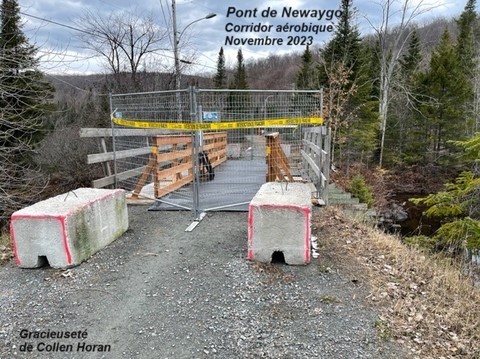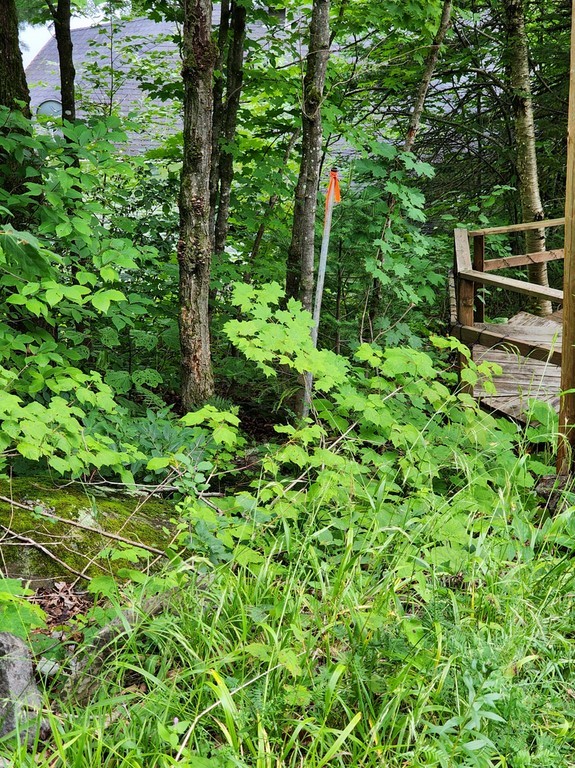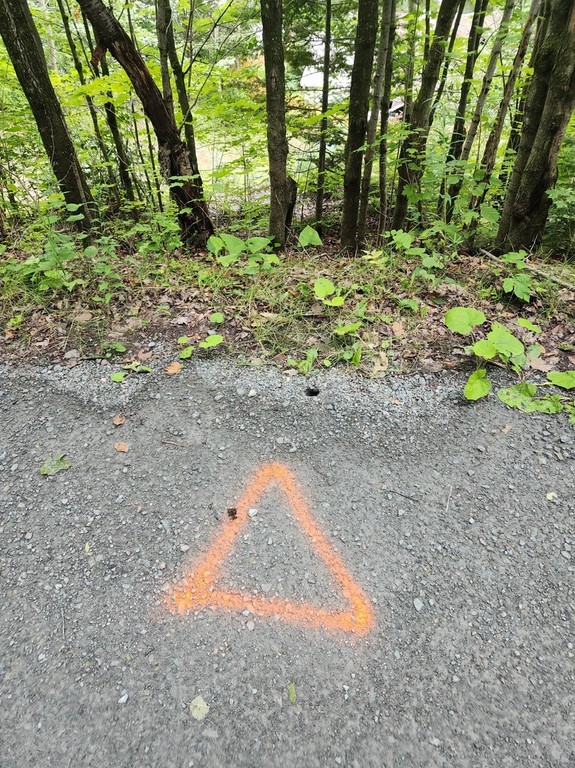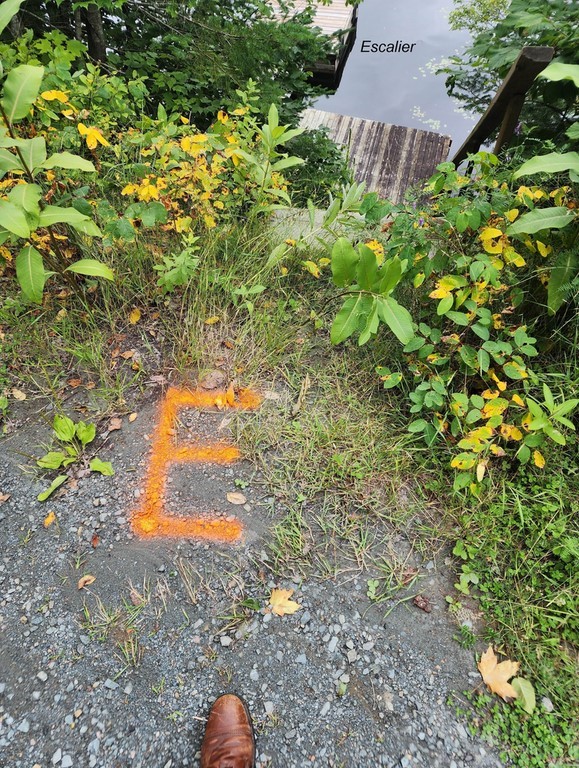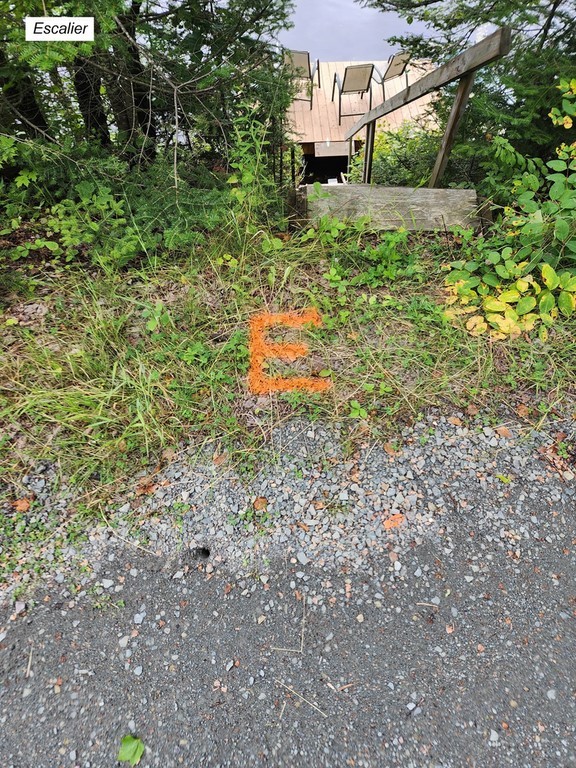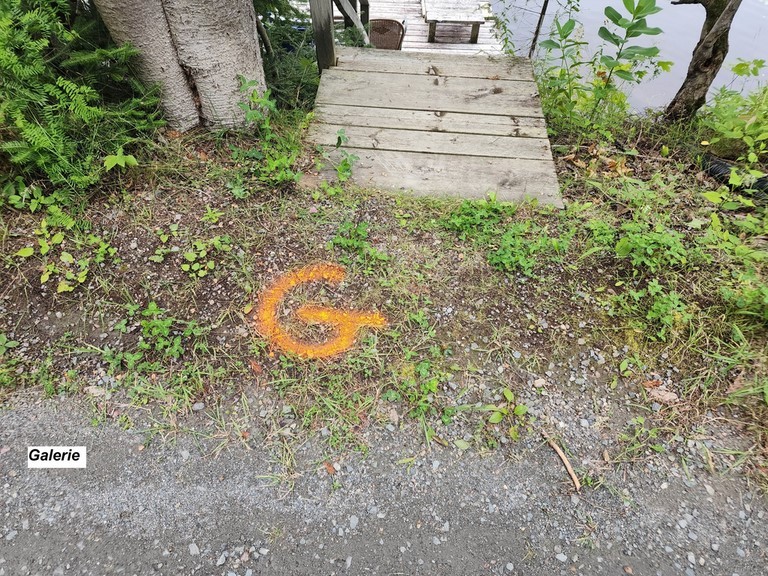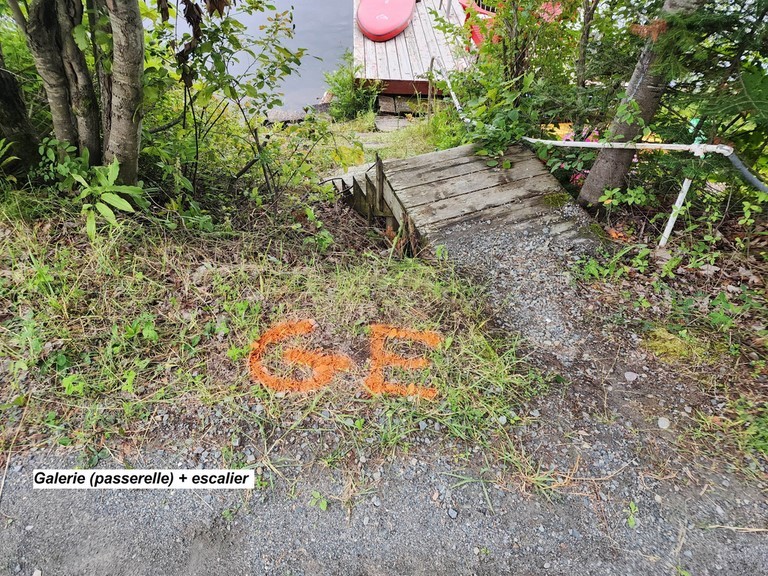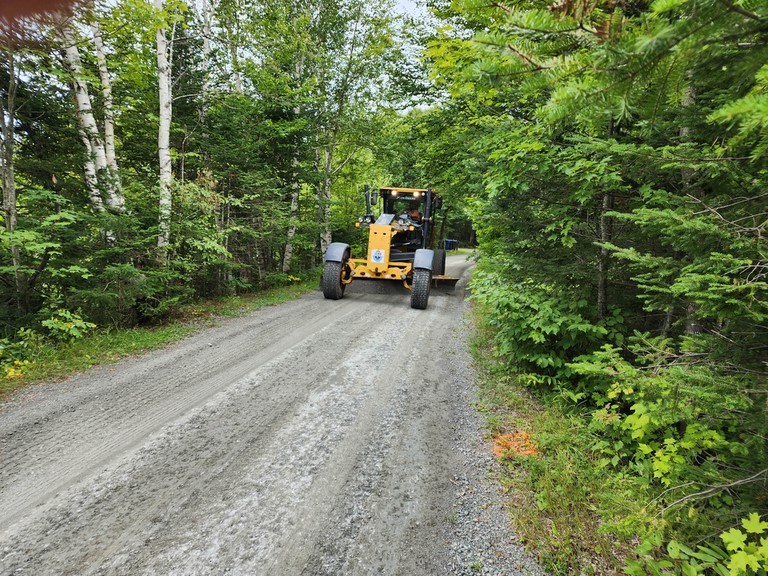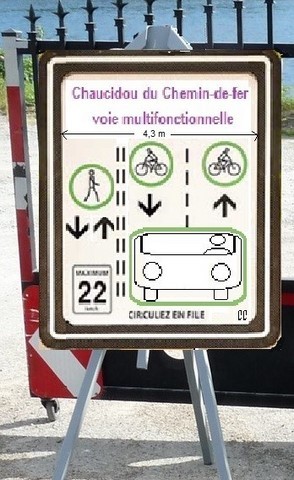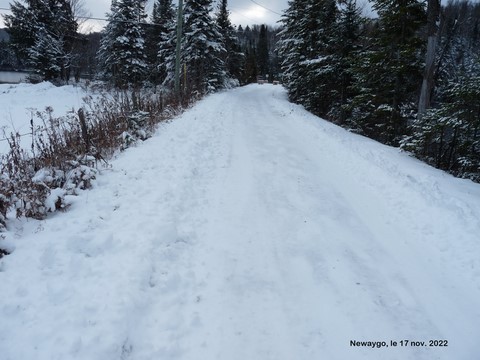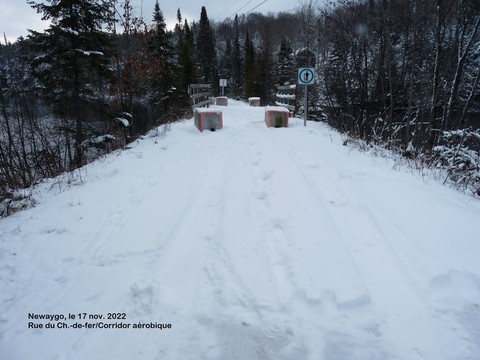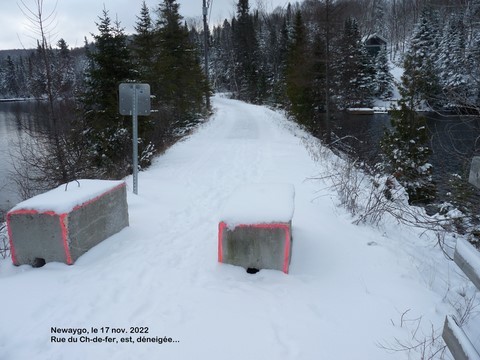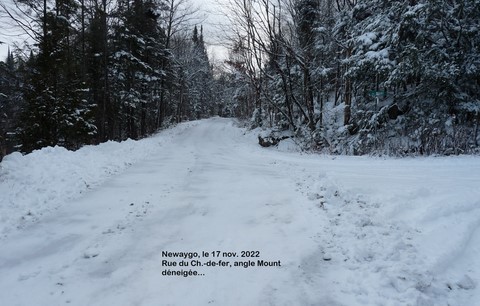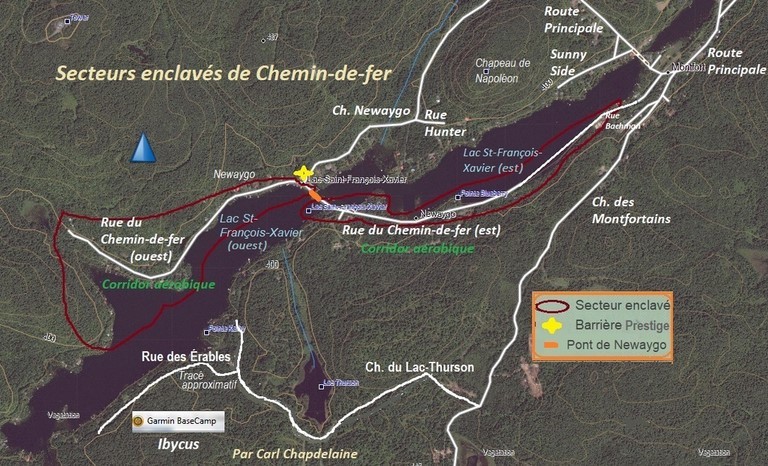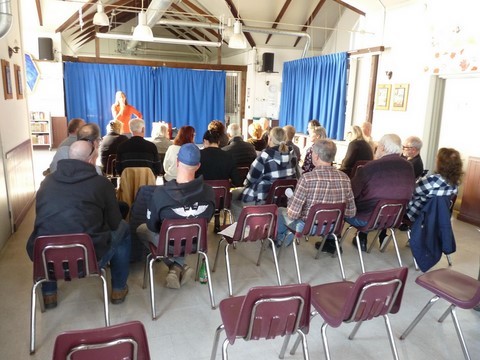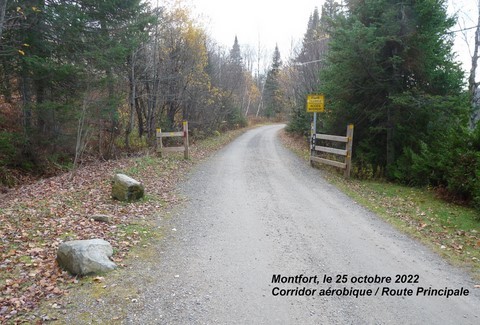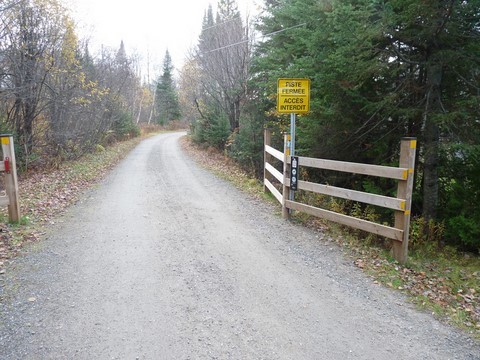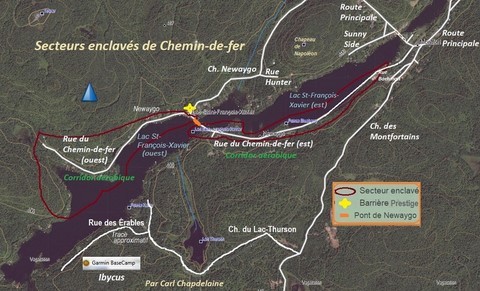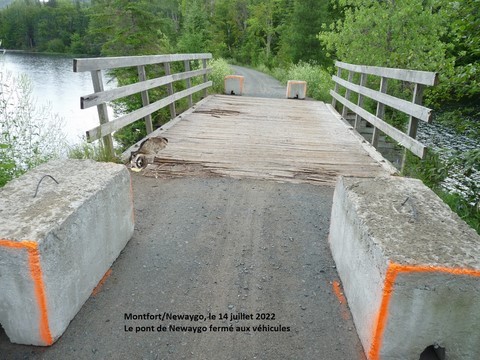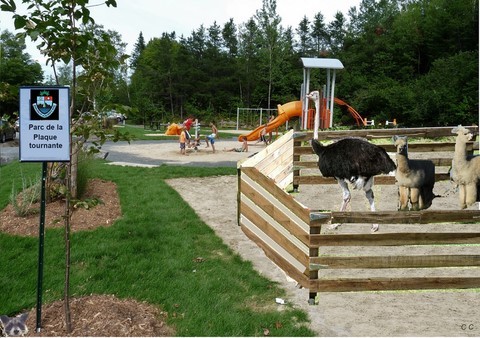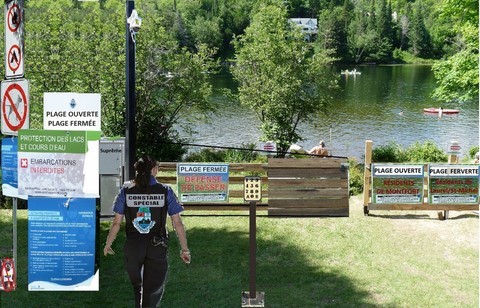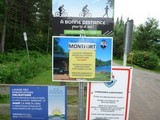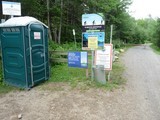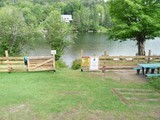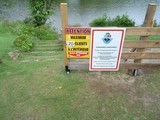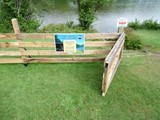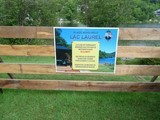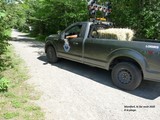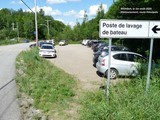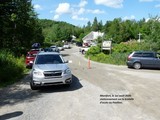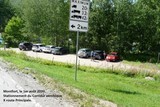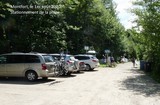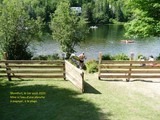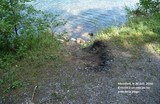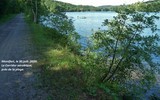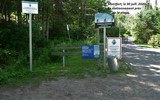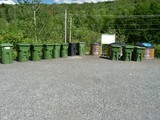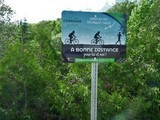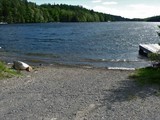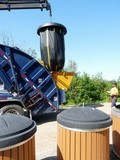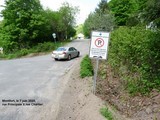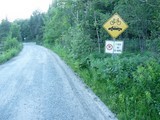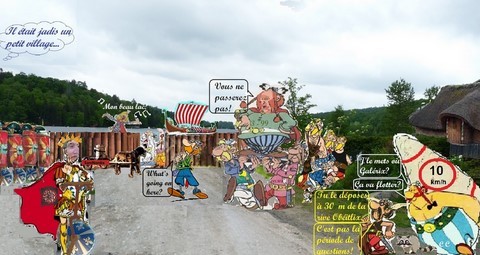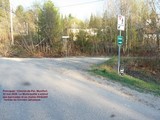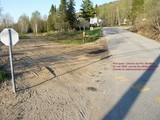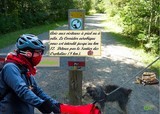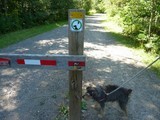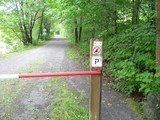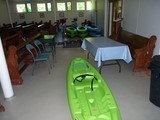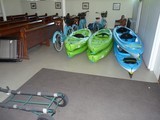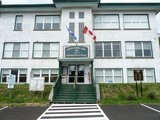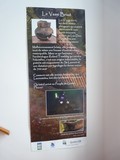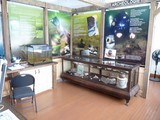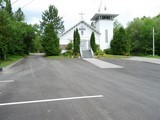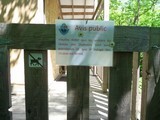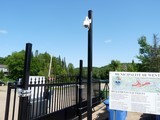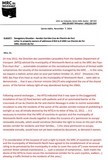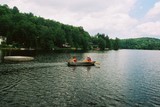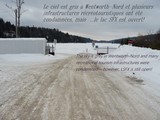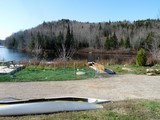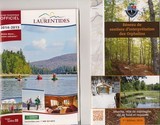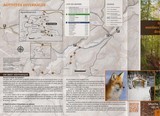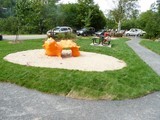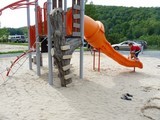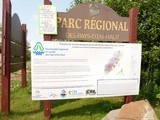Parks, Aerobic Corridor, etc.
- Newaygo bridge closed
- The Aerobic Corridor right-of-way
- Aerobic Corridor?
- Chemin-De-Fer Cleared of snow
- Closure of the Aerobic Corridor, injunction or agreement?
- Rue du Ch.-de-fer's landlocked sectors
- Closing of the aerobic corridor, meeting with the mayor of oct 22
- Meeting with the mayor Saturday, oct 22
- Closure of the Aerobic Corridor
- Droit d'occuper sur Chemin-de-fer
- Meeting of the mayors Tuesday, octobre 11th
- information meeting on Chemin de Fer’s maintenance
- Safety and transparency please!
- Permission to occupy on the Aerobic Corridor
- P.tit train du Nord Carte interactive
- Fence to be recycled
- Access to Montfort beach
- Barrier closed, barrier open...
- Montfort beach fenced
- A Thursday in June 2020 in Montfort
- Parking on Chemin-de-Fer
- Cesar in Newaygix!
- Opening of the Aerobic Corridor
- It doesn't make sense!
- Right to occupy on Chemin-de-Fer: our report
- Right to occupy on Chemin-de-fer
- Snow removal on Chemin-de-Fer: update
- Snow removal: update
- Snow Removal on the Chemin de Fer
- Commemorative benches at the MRC
- Less winter more summer
- Return to nature (essay)
- Hiking, cycling...
- Snowmobiles at Mont-Tremblant
- Snowmobiling in the national parks?
- Corridor, dogs, bikes
- Kayaks at the Pavilion
- Sunk heritage
- Public consultation on trails, report
- Public consultation on trails
- Right to occupy on Chemin-de-fer
- SOPAIR et vélo de montagne
- Outdoor in decline
- Fin de la collaboration W-N - Coop des 4 Pôles
- The orphans: topographic profile
- Shelter locked; Orphans abandoned
- Canoe and kayak: «in» sports
- Holograms in the woods
- Park of the Aerobic Corridor: Development!
- Les sentiers du patrimoine
- Circuit du Lac à la Croix
- Corvée le 17 octobre 2015
- Le Refuge du Sentier des Orphelins
- Les coupures et la Route verte
- Débloquer le Corridor?
- Guides touristiques
- Parc communautaire de Laurel
- L'héritage de Jackrabbit en péril
- Parc de la plaque tournante
- Voies partagées au Corridor
- Aménagement du parc de Montfort
- Projets pour le Corridor aérobique
- Voie partagée: MRC vs MTQ
- Le sentier récréatif du lac Saint-François-Xavier
- Parc Régional des Pays-d'en-Haut1
- Panneaux d'interprétation des parcs linéaires
The Aerobic Corridor right-of-way
On this August 10, 2023, two surveyors from the Ministère des Transports et de la Mobilité durable complete the exact delineation of the right-of-way of the shared lane (45 feet on each side of the center) running through the village of Montfort-Newaygo. Although this operation had already been carried out in the past, an update is always required in this field. They have been at work since the end of June, cataloguing the buildings on the right-of-way, the docks that cling to it, and much more. In addition to their geodetic surveys, they have filled out around a hundred sheets, with sketches of buildings or other surveys along the way. The nature of the soil is noted, along with many other details.
Unable to count accurately on their GPS in wooded areas, they have even dug up some survey markers long buried in the soil of private properties, equipping them with stakes topped with a staff and an orange ribbon, in front of sometimes anxious owners. This probably enables them to determine, by triangulation, the geodetic position of the right-of-way of this shared road. It's at their offices that the data will be processed, enabling them to reconstruct the exact layout of the lane and a portrait of its surroundings.
What is the ultimate goal of this operation? Is it related to the management of such rights-of-way, with a view to eventually imposing regulations and recognizing the responsibilities of these owners, based on their use of public land? It will be recalled that the latter were required to complete the "Request for permission to occupy a linear park right-of-way"; an operation cut short for lack of agreement between the authorities or the legality of the form.
This inventory, as well as the determination of an occupancy policy by the MRC, had already been announced in April 2021; but this was a subject that had been discussed many years before. However, it seems that the Ministry's surveying operation was rushed through this summer. Was it to provide a counter-expertise to that initiated by the authors of the lawsuit brought against the Ministère and the MRC, following the closure of the Newaygo bridge and the consequent enclavement of the properties concerned? This collective pursuit (not a class action), coupled with an injunction, demanded, among other things, right-of-way for all property owners served by the shared roadway. Indeed, it seems that the ten-year-old right-of-way agreement, accompanied by a Supreme Barrier, was called into question in the spring of 2023, or stalled on certain points or conditions to be met.
The fears and demands of Rue du Chemin-de-fer residents can only intensify, both in the face of increasingly difficult cohabitation between Corridor users, and in the face of the legal proceedings in which they have now embroiled themselves.
Here, moreover, for small problems, as for larger ones, the residents of Rue du Chemin-de-fer already have the difficult task of knowing which authority to turn to. Who, the municipality, the MRC or the ministère des Transport et de la Mobilité durable, is going to take care of road maintenance, snow clearing, rebuilding the Newaygo bridge, signage, garbage collection, getting the automated gate back into operation, etc.? The passage of the Wentworth-Nord grader on this August 10 indicates that the work is being well executed by the municipality.
As the Corridor and Montfort Pavilion management agreements between the municipality and the MRC flip-flop, residents no longer know whether enforcement of one regulation or the other is the responsibility of the Sûreté du Québec or the new Wentworth-Nord constabulary? Who will give you a ticket for illegal parking on the Corridor, and under what bylaw? Who will grant you permission to keep your dock? And which of these organizations is really telling you the truth?
Without prejudice; by Carl Chapdelaine
Translated with www.DeepL.com/Translator (free version) & Linguee
Politique régionale d’occupation des emprises riveraines des parcs linéaires…
Aerobic Corridor?
On the weekend of August 5 and 6, a scattered horde of electric fat bikes emerge from the forest at km 12 of the Aerobic Corridor. Are they completing the Orphans circuit; are they simply returning from a round trip from Morin-Heights; or have they taken the Corridor from Mont-Tremblant, with its 60 km route?
One of them is driving pretty fast; we'd hate to see him run into a cyclist or pedestrian on our shared way. Are we still talking about bicycles here, or are we closer to scooters? But what are they doing in an aerobic lane? Is it still a bike lane? Green, perhaps; but how far can we go in terms of motorization and the size of these machines, whose only green feature is that they're electric? Doesn't the danger increase with weight and speed?
The problem is certainly not unique to the Aerobic Corridor; all kinds of hybrid bikes, electric chairs for the disabled, even wheeled vehicles, electric boards and the like, have invaded bike paths, streets, and sidewalks in Montreal, and probably elsewhere too. And who knows what invention will be rolling tomorrow amidst this panoply? Regulations no longer make sense.
On the Corridor, there is a recommended speed limit of 22 km/h, or 10 km/h when approaching populated areas; but who knows what it is? Signage is certainly not enough for a shared way. At the very least, you need a flashing light to warn you to be careful. For a completely different purpose, the one already in operation, between kilometer 8.9 and the Newaygo bridge, indicates the availability of such equipment. Educational speed cameras, as envisaged by the general manager of the P'tit Train du Nord, would not be superfluous.
Yes, according to the Aerobic Corridor Park documentation, car traffic still seems to be allowed on our shared lane, despite rumours to the contrary. As far as we know, there's nothing new about this famous right to occupy and circulate, despite the questions that the current collective action lawsuit may raise.
But if motorists, familiar with our shared roadway, are generally respectful of pedestrians and cyclists, enthusiasts of hybrid fat bikes or other electric vehicles are not always as aware, not only of the recommended speed limit, but also of the behavior that is required according to circumstances on the shared roadway.
And here, good faith is not necessarily in question. Traffic on the lake, with the cohabitation of users, slow and fast crafts, and despite the presence of buoys, suffers from the same lack of information and knowledge on the part of many as does poor public management.
As we were reminded by a comment to the July 26 consultation on the municipal buyout of Montfort Pavilion, this eventuality will not solve the problems associated with the Corridor's passage along Lake Saint-François-Xavier. Quite the contrary, perhaps, if ridership increases.
Indeed, who knows if tomorrow the Corridor won't be invaded by hybrid fat bikes or other enthusiasts in search of the long track of their dreams, with rental outlets for these machines at each end of the route? On the divided way, they'll be mingling with vehicles, ordinary cyclists, hikers, and locals on two, three or four legs. And won't the Pavilion, or community center, with its parking lots, become more and more an essential reception post, for health services, emergencies, reception, control? But, in the absence of shops, this potential windfall is unlikely to benefit the local economy.
And where do we stand in the search for solutions, for new rules of conduct, for cohabitation, for an increasingly conflict-ridden use of a so-called aerobic lane? Consultations In Monfort, Topic 1: The Shared Way
Among the regulations imposed on users of the Aerobic Corridor are the following:
- All motorized traffic is prohibited (except for shared-lane segments).
- Queue up one behind the other when in a group.
- Overtake on the left only and signal your intention.
- Wearing a helmet is not mandatory, but strongly recommended.
- The recommended speed is 22 km/h and 10 km/h when approaching populated areas.
- Yield to oncoming cyclists and pedestrians always.
Difficile pour le vélo dans les Pays-d'en-Haut | Journal Accès (journalacces.ca)
Without prejudice; by Carl Chapdelaine
Chemin-De-Fer Cleared of snow
Closure of the Aerobic Corridor, injunction or agreement?
Simon Cordeau, from the newspaper Accès, reports the words of Ms. Hélène Perrier, co-applicant of the formal notice to the MRC, the Ministère des Transports et de la Mobilité durable (MTMD), as well as the Ministère des Affaires municipales et de l'Habitation (MAMH), to the effect that, given the lack of sufficient response from them, an injunction is being considered. Half of the residents concerned are already involved in the process. For the applicants, on the other hand, the insurance issue does not hold water.
For his part, the prefect, Mr. André Genest, believes that the residents are overly concerned. The MRC has had good meetings with the ministries, and negotiations with the municipality are progressing. The mayor, Danielle Desjardins, says she is encouraged and sees common ground.
By Carl Chapdelaine
Retrospective Accès : Chicane entre W-N et la MRC
Closing of the aerobic corridor, meeting with the mayor of oct 22
Mrs. D. Desjardins gave a summary agenda:
- The "Resolution of Zizanie".
- The history of occupancy permits and the application form.
- Management of the Newaygo automated gate.
- Citizens' demands to the MRC, the Ministry of Transport and the MAMH.
At the beginning, the MRC managed the Pavilion alone. Then, it entrusted the management of the Pavilion, as well as a section of the Aerobic Corridor, to the Coop-des-4 Pôles.
The new mayor, Mr. François Ghali, took over the contract from the Coop, with certain additional obligations introduced by the MRC.
In the proposed renewal of the contract with the municipality for 2022, the MRC, according to the mayor, added more obligations, including the 60/40% MRC/W-N sharing of the maintenance costs of the Newaygo bridge (not under the jurisdiction of the Min. of Transport, if applicable). The municipality did not agree to pay any of these costs and refused. It could not tie up or borrow against property it did not own.
Following the inspection report of DWB Consultants, in December 2021, indicating that the bridge constituted a danger for the safety of its users, including cyclists, and faced with the formal refusal of the municipality to participate in its replacement or in the construction of a temporary structure (evaluated at $350,000?) the MRC decreed its closure last July.
(As for the traffic on the shared lane of the Aerobic Corridor, let's recall that the agreement between the municipal authorities (?) and the Ministry of Transport, included, among others, three obligations for its residents:
1. The installation of the automated barrier imagined (?) by the current prefect, Mr. A. Genest, to prevent any unauthorized traffic in this section.
2. The assumption of snow removal and summer maintenance costs.
3. The annual presentation of a proof of insurance, by each resident, in case their vehicle damages a user's bicycle, for example).
"Since the Newaygo Bridge was closed to vehicular traffic, 14 residents southeast of Lake St. Francois-Xavier have had to travel east on Rue du Chemin de Fer for approximately 640 m to reach Principale Road. However, the resolution puts an end to the temporary permissions, granted by the MRC, that allowed residents to drive on this section, where automobile traffic and the Aerobic Corridor coexist." Accès du 19 octobre, p. 8 Their right to occupy (and circulate) is being taken away, Desjardins says.
In reaction, a couple of residents directly affected sent a formal notice to the MRC, the Minister des Transports et de la Mobilité durable (MTMD), as well as to the Ministry des Affaires municipales et de l’Habitation (MAMH). They asked, among other things, that the necessary work be undertaken to repair the Newaygo bridge and that the Resolution be repealed. The mayor did not hide her support for the couple, and she took up the latter demand. To do this, while respecting the urgency indicated in the formal notice, the MRC should hold a special meeting of its council.
Chemin-de-fer
Desjardins explains that such abandoned railroad rights-of-way belong to the government and exist throughout Quebec. There will never be any question of privatizing them, she adds. The government is seeking to standardize the management of these rights-of-way. In the Laurentians, this would be entrusted to the MRCs. (Octroi d’une permission d’occupation) The question of the right to occupy is not unique to Montfort; and the mayor has copies to distribute of the form of the MRC des Pays-d'en-Haut, issued in 2021 (?), which allows to make the "Request for permission to occupy the right of way of a linear park". It is indeed a one-year permission, renewable. (We understand that it should be submitted annually).
Arrangements could be made with the municipality to standardize the answers requested; while the resident can also count on the assistance of the MRC to know how to proceed. Will there be an information meeting on this specific point? However, the form already contains a list of criteria for evaluating applications; but, we do not see any mention of insurance.
Since the requirement to carry such insurance is specified for Chemin-de-fer residents, the Mayor said she is considering submitting an umbrella insurance policy, which would relieve the resident of having to apply for it annually, but the cost would be added to the resident's municipal tax bill. Similarly, an annual umbrella application for permission to occupy could be managed by the municipality.
The gate
Since it is part of the agreement between the municipal authorities and the Ministry of Transportation, it is necessary, admits Desjardins. But, as we know, it does not appear to be functional. Here, the Mayor expressed the need to evaluate all options for a functional barrier at the intersection of the Aerobic Corridor and Newaygo Road. A Gate Committee was immediately proposed, and Mr. Dean Barrière, with a predestined name, seemed to be the right man to chair it!
Mrs. Hélène Perrier, co-signatory of the formal notice to the MRC, the MTMD and the MAMH, took the microphone to explain the purpose of this action and its follow-up. The MRC was the only one to provide a response within the required 5-day time frame. The response stated that there are currently no impediments to traffic on the Aerobic Corridor shared lane. However, this short response did not satisfy the applicants. The two departments, for their part, had not even acknowledged receipt at the time of this presentation.
Here, it was appropriate to explain that, according to the authorities, the 640-meter section to join the Principale Road, which the residents located east of the Newaygo Bridge must use and who are deprived of the latter, does not have the status of a shared road, we believe we heard. So, would a right to occupy (and circulate) not even be available to them?
Ms. Perrier's presentation was coupled with a question about whether residents west of the bridge would want to join their action, and the costs of the latter.
Translated with www.DeepL.com/Translator (free version & Linguee
Meeting with the mayor Saturday, oct 22
Meeting with the mayor Saturday 22,2022 at 1 o'clock at the Laurel library (on the side of Hotel de Ville)
Agenda,
1. closing of the aerobic corridor
2.The resolution from the mayors of Pays d,en Hauts and the consequences
3.The formal letter of notice to MRC,MTQ,MAMH
4.Public security (permission to occupy)
Colleen Horan, concillor, district 5
Closure of the Aerobic Corridor
Formal notice to the MTQ, the MRC and the MAMH
On October 17, 2022, following the closure of the Aerobic Corridor announced at the October 11 meeting of the Mayors' Council, Mrs. Hélène Perrier and Mr. Jacques Leblanc, via their attorney, the law firm Therrien-Lavoie, sent a formal notice to the MTQ, the MRC des Pays d'en-Haut and the MAMH. Through this notice, they jointly request that they undertake the necessary work to repair the Newaygo Bridge and to allow motorists and service vehicles to circulate on the aerobic corridor from kilometers 8.8 to 12, so that they may access the buildings located there at all times, as soon as the notice is received.
The demand letter also requires the repeal of the resolution* adopted by the Council of Mayors concerning this closure, which they claim is based on erroneous, abusive and illegal considerations; as well as the removal of the two signs installed on October 14, 2022, prohibiting access to the section of the aerobic corridor between kilometers 9.07 and 9.7.
The notice contains the history of the establishment of Mrs. Perrier and Mr. Leblanc on Chemin-de-fer Street, which has provided access to their home for 44 years. It also recalls various contracts and obligations which would bind the parties in the sense that they invoke. It also underlines the negligence of the MRC and the endangerment of the users of the bridge, for not having communicated to them the risks indicated at the time of the inspection which recommended its closure.
*Resolution:
- To CLOSE the part of the Aerobic corridor which passes through the Municipalité de Wentworth-Nord, specifically kilometers 8 à 14.6 et 15.7 à 17.60 starting on October 15, 2022;
- To RECOMMEND to the residents of Wentworth-Nord who use the Aerobic Corridor to get to their properties, to obtain a permission to occupy from the owner of the land, i.e. the MTQ, allowing them to circulate and clear the snow from the Aerobic Corridor;
- To INFORM residents of Wentworth-Nord who use the Aerobic Corridor to get to their homes;
- To INFORM the MRC’s insurance provider and the Ministère des Transports du Québec.
Translated with www.DeepL.com/Translator (free version) & Linguee
By Carl Chapdelaine
Meeting of the mayors Tuesday, octobre 11th
Hello to you all,
It is very important that you attend this meeting either in person or on the Facebook site of the MRC of PDH as topics that will affect you directly will be announced and for which there might be a vote. Please advise your neighbors of Montfort and Newaygo as I do not have all the email addresses.
https://lespaysdenhaut.com/seance/conseil-des-maires-octobre/
Points importants pour les gens du Chemin-de-Fer et de Montfort:
5.2. Développement récréatif
5.2.1. Utilisation d'une partie du parc du Corridor aérobique et des bâtiments, sentiers de la Montfortaine - Wentworth-Nord
5.2.2. Octroi du contrat de gré à gré #KS-2022-01-PARC - Entretien des bâtiments sur les parcs
5.2.3. Corridor aérobique - Fermeture pour la saison hivernale
11 OCTOBRE 2022 - 13 H 15 | 39, CH. FRIDOLIN-SIMARD, ESTÉREL
Denyse Pinsonneault
information meeting on Chemin de Fer’s maintenance
There will be an information meeting Saturday October 8 at 11 am at the Montfort Pavilion.
The Mayor will be talking about the Chemin de Fer’s maintenance for winter and summer.
The mayor will also discuss the taxation for 2023.
This meeting should be short and last perhaps 1 hour so that the citizens could enjoy their long weekend.
Thank you for your participation,
Colleen Horan
Safety and transparency please!
The closure of the Newaygo Bridge decreed last July, to follow up on the inspection report of December 2021, which recommended banning car traffic, raises many questions. This is what Simon Cordeau's article in the September 28 edition of the Accès newspaper suggests.
The Newaygo Bridge is a danger for the safety of its users, including cyclists who still use it, given the state of its railings, among other things; this is what the DWB Consultants report quoted by the journalist indicates. Pedestrians are not much more protected, in our opinion, and one should not jostle too much, for fear of tipping into the lake, a few meters below. But the MRC and the municipality of Wentworth-Nord, for the reasons indicated in the article, acted only belatedly for the first, or not at all for the second. This situation, even if it does not seem to be unique on the Aerobic Corridor, and the reaction of our local authorities, remain unacceptable.
The open conflict between the two municipal authorities concerning the responsibility for this bridge, as well as for the other capital assets or services they share in Montfort, must imperatively be resolved, even if it means mediation. The citizen has nothing to gain from this gladiatorial combat.
And what if they were also hiding the state of the situation concerning the "high capacity" dike, which holds back the two meters of water that exceed the natural level of Lake Saint-François-Xavier? The corrective measures recommended by the Services d’expertise hydrique of the Ministère de l'Environnement et de la Lutte contre les changements climatiques, in 2015, have "not yet begun according to the implementation schedule approved by the Minister". Could it be that the Coliseum is crumbling while our two gladiators battle it out? As luck would have it, in the data sheet* for these services, the municipality of Wentworth-Nord and the Municipalité Régionale de Comté des Pays-d'en-Haut are indicated as the owners or agents of this dike. "In what proportion," they will argue, as the cyclists ride and the water flows; or will each defend itself from being responsible?
With all due respect, by Carl Chapdelaine
*The date of the update of the file is not specified.
Translated with www.DeepL.com/Translator (free version)
Permission to occupy on the Aerobic Corridor
In a circular email, District 5 Councillor David Zgodzinski announced that he and Mayor Ghali, André Cliche, the members of the special committee responsible for negotiating with the MRC on issues affecting Montfort, under the conciliation of the Ministère des Affaires municipales et de l'Habitation (MAMH), are scheduled to meet with the MRC administration on May 10.
At a previous meeting, he discovered that the MRC Council had passed a resolution at the April meeting declaring its policy regarding permission to occupy (on linear park rights-of-way) politique concernant la permission d'occupation. This resolution was proposed by Mayor Ghali and passed unanimously by the mayors.
He complained to his constituents that, to his knowledge, Mayor Ghali had never mentioned the existence of this resolution to him; nor to anyone else in Montfort. He was very concerned about the implications of this policy for the residents of Chemin-de-fer Street and invited the concerned property owners to express their concerns to the MRC.
The Councillor now invites residents to submit by e-mail the questions they would like to have answered; promising them a report following this meeting.
Without prejudice, by Carl Chapdelaine
P.tit train du Nord Carte interactive
Fence to be recycled
On September 9, Mr. Yves Léveillé, resident of Montfort, sent an email to the Director General of the Municipality of Wentworth-Nord. It is an offer to dismantle the beach barrier by organizing a citizen's chore. The month of September and the end of the swimming season having arrived, the temporary barrier can now be removed, he reminds her. The money saved by the municipality could then be used for community projects?
Par Carl Chapdelaine
Access to Montfort beach
Article 919 of the Civil Code of Quebec stipulates that beaches, when they are the beds of lakes or rivers, are accessible to the public; provided they are legally accessible. Abrinord
However, what is commonly referred to as a "beach" also includes the shoreline, which does not seem to be subject to the same rule. Could the Municipality decide to reserve the latter part for its residents?
To our knowledge, the Court has always rejected municipal (MRC or municipalities) by-laws limiting the public use of water ramps. Would the same decision be required in the case of access to the "beach"? In order to make an informed choice, we would like our elected officials to guarantee, among other things, the legality of their interventions. At present, the considerations that determine the perception of citizens, although most often defensible, cannot allow a consensus to be reached.
The problems encountered today in Lake Saint-François-Xavier can be found on multiple lakes in Quebec, Ontario and probably across the country. And the government does not seem to want to deal with them, probably because of the impossibility of reaching a consensus on the issue. It seems that, at the moment, each municipal authority is going at it on its own initiative and with its own arguments. Would it not be wiser to have rules set at a higher level and apply to everyone? Would it not be wiser for a MRC rather than each of its constituents to determine these rules?
It seems to us, in any case, that the system of controlling access to the Lake by requiring a parking sticker, as well as for one's boat if necessary, is a significant measure. Even the arrival of swimmers from outside is limited by this measure, thus giving certain preponderance to those who live near the beach of Montfort. The possibility for residents to obtain permanent parking stickers would even accentuate this preponderance. However, surveillance by a constable seems essential to the proper functioning of this system. But this whole saga isn't in its final episode.
Today, Councillor David Zgodzinski, who had obtained the installation of a fence with a gate, is asking that this barrier be opened to allow Montfort residents to bathe. He believes this is in response to local popular demand, while the beach's official closure was due to the inability to maintain the physical distance required by the pandemic. The recent installation of two very threatening signs on the temporary fence, however, further discouraged the use of the beach.
Moreover, given the importance of the resources needed to enforce regulations and measures to protect the public and the environment on Lake Saint-François-Xavier, it seems normal to require the MRC to contribute its full share and in accordance with its responsibility for the use of the site.
With DeepL translator
By Carl Chapdelaine
Barrier closed, barrier open...
Since our visit during the construction of the fence at Montfort beach, a barrier has been installed. It was supposed to allow, we were told, residents who wanted to bathe to pass, but not visitors. Here we are, it seems, at the border of the land under the jurisdiction of the MRC and that belonging to the Municipality. But can the municipality allow some people access to the lake and prohibit others? The construction of this temporary street furniture must have cost, to date, a few thousand dollars.
In the middle of Saturday afternoon, there was practically no one at the beach. Something had worked somewhere. There was no constable in sight, but he, we are assured, remains available on call. Both parking lots were almost full; some cars had the mandatory sticker; others did not. A few paddleboard enthusiasts would take advantage of the beach to launch their equipment; without a sticker and despite the sign indicating, strangely enough, that no boats are allowed in the lake. They had had to park without further formality.
As soon as it was closed, the gate had just been reopened by an employee of the Municipality delegated by the DG. Had the fate of the structure just been decided? Had the MRC objected to its presence? On the parking lot next to the beach and to our great relief, a chemical toilet, visibly accessible to all, had just been installed. From the outside, no precautionary measures to be taken to deal with the pandemic seemed to match its use; there was no need to install a bell...
But now we are informed that the beach was full, only an hour after we passed by. Then a constable shows up and orders everyone to leave, with many explanations to each other. The barrier is closed! Had he carried out this operation more than once? What will happen tomorrow? The instructions from above are disordered. And that would reflect, among other things, the current situation at the Maison du citoyen; it is no longer clear who, the Mayor, the Council, the District Councillor or the Director, is in charge here.
On the side of the Pavilion, around three o'clock, there was quite a bit of traffic. The parking lots were full and many cars lined up along the access ramp or even on the Route Principale.
Meanwhile, at Newaygo, the Supreme barrier seemed to have come out of its long sleep, while the small one had been opened to let the cars through anyway. There seemed to be no way to open the big one from the remote control box; as long as one remembered his personal operating code. Should it have been handled by hand? We imagined that the SQ patrol would arrive with its boat this weekend, hoping that this time it would not have to return to Saint-Sauveur without having been able to enter the Estate.
We weren't very good at Latin already; this time we lost it completely....
By Carl Chapdelaine
Montfort beach fenced
We had been told that further measures would be taken to prohibit access to the small public beach. As a blockade, the municipal authorities imagined erecting a temporary fence. It will extend the entire length of the beach and will be equipped with a barrier.
The primary purpose would be to prevent visitors from launching light watercraft such as kayaks and paddleboards. Would it also prevent intruders from swimming?
The obligation, under penalty of a fine, to obtain a free sticker at the Montfort Pavilion to park one's car in the small public parking lots in the area would not have succeeded in regulating the flow of visitors in these times of deconfinement. At the same time, the vignette initiative ensured that anyone arriving with a boat would pass through the Pavilion to have their paddleboard, canoe or kayak washed and launched at the appropriate dock. The lake itself has its own threat of pandemic, that of a possible infestation by Eurasian Watermilfoil.
But here it is; the instruction to pick up your sticker at the Pavilion is not respected, nor is the closure of the beach. The Municipality may have hired two constables, apparently on a part-time basis, but the task they have been given seems excessive. Are their directives clear enough already? There seems to be far too much supervision to be done here; a full-time job for every busy day.
Already, several offending visitors are launching their boats all over the place from this section of the Aerobic Corridor, which the municipal beach is clinging to. This can be done either by using a private shoreline wharf or on the public strip bordering the lake. Here, the difference in elevation between the old railroad tracks and the lake surface makes it difficult to slip in with a boat. In some places, the erosion thus created attacks the very sole of this greenway.
On the other side of the Corridor, opposite the beach, the Plaque-tournante Park also welcomes visitors. It remains open, but the two chemical toilets normally available have been removed because of a lack of knowledge about how to disinfect them from possible Covid-19 miasmas after each use. Don't try to imagine where people in a hurry go to relieve themselves; they may not look for long under the surrounding forest canopy. If you have the misfortune of having your property nearby, you know something about it.
This park also has its regulars, and not only from the village. One resident observed a couple coming to "reserve" the small pavilion that is perfect for a picnic. The bulk of the group would arrive later and enjoy this prime spot. Normal, you might say?
So, the solutions. Well, probably not the one, à la Valérie Plante, of the fence. Someone will certainly find a way to go over it, next to it, or throw it on the ground. At worst, it will push the boldest to look elsewhere for the best access point to the lake; and it won't be difficult to find it. And while you're at it, why not surround the whole lake with such a fence; you are not one barrier away...
For swimming, if one were to consider allowing it again, some people would recommend charging a fee, as in Sainte-Agathe or elsewhere. Would such an initiative contravene the right of access to the lake that every citizen should enjoy?
For boat launching, one of the solutions proposed by some observers is to make the obligation to obtain a parking sticker fully applicable. For the other behaviours observed on site, the new constables should be given the means to effectively control the situation.
In our opinion, the mobile toilets should be put back in place, and the guards should be given the task of disinfecting them in addition to their duties. Whether you put a bell on their door to warn him of their use or need to ask for the key to access them, the toilet has its place. Apparently all it takes is a spray of disinfectant to scare the virus away. So the guard should stay on site, near the beach; a nice summer job, all the same.
The constable should also watch the few private areas or docks near the beach to invite any intruder to leave.
Some observers do not see any solution. Others talk about a Lac-à-l'épaule. But in a climate of confrontation, not only between the Municipality and the MRC, manager of the Aerobic Corridor, but today between the members of the municipal council themselves, it is certainly not the time for consultation. The solution for some would simply be to blame the others, but the citizen pays indifferently for all.
At the same time, there are still those who do not want to see visitors in "their" lake, but for whom we are running short of arguments. And those whose convictions prevent them from reinforcing this view.
With the use of DeepL translator and Linguee.
With all due respect.
By Carl Chapdelaine
A Thursday in June 2020 in Montfort
On this beautiful late morning, there was no one anywhere in sight. The replacement attendant at Pavillon Montfort welcomes us on the doorstep. Wearing the mask, we pretend we want to pass incognito. Having recognized us in spite of everything and having put on the mask herself, she returns the joke. Her concern is obviously to make sure that we expressly use the installation of the outside sink, with a tap fitted with not less than a magic eye, which will rid us of all these potential Covid-19 miasmas so virulent in the metropolitan area. But, as there seems to be no one else inside and we are assured that everything is calm, we will not venture in. The art gallery appears to be tightly closed.
That same evening, Dr. Weiss was teaching a flabbergasted Patrice Roy of RDI that wearing a mask was far more important than washing your hands for protection against the Covid-19. Indeed, the virus is projected into the air through the mouth of the wearer, and it tries to reach the lungs of the victim by breathing especially. Its spread through affected surfaces is secondary. We were thinking of the same crystallization that occurs in lake users through the washing of not only boats, but also paddling boards, kayaks and oars, which has become mandatory, by pressurized water jets, rather than by visual detection, among other things. The latter, used alone, could have been blamed in the past, it seems, on the employees of the Coop des 4 Pôles in charge of this control against Eurasian Watermilfoil. This is what we call here: leaving on balloons, rather than giving clear and logical explanations to the population... The previous one was the blue-green algae invasion; the next one will surely come just in time.
We noticed, on the parking lot of the Pavilion, the alignment of plastic menhirs, so characteristic in the region, in front of the three semi-buried bins intended to replace them. The attendant explains that everyone is depositing so much garbage here that the bins can't handle it. It would mainly be the vacationers who have to get rid of it when they leave their cottage. She added that the bag of the semi-buried garbage bin is torn; it will eventually have to be removed and that someone will have to get down into the deep hole to collect the spilled contents.
The huge bag will have to be sewn up or changed. All of this will cost a small fortune and will add to the many such incidents across the territory. As one of the people in charge of emptying the bins explained to us earlier, users throw objects in the bins that could tear the canvas. We ourselves had already removed long metal poles that someone had managed to get into the bins at the Newaygo Marina. We had suggested that a small poster be put up at each of these stations to remind users not to throw objects that could tear the bag in the bins; this recommendation was not implemented. A few extra dollars on the tax bills of thousands of residents must be enough to cover the now exorbitant costs of maintaining this precious street furniture... Photos of the month
There was indeed such prevention poster concerning the physical distance to be respected on the Aerobic Corridor. It seemed to be aimed mainly at cyclists; calls of the residents of Chemin-de-Fer Street who were appalled had at least been answered. However, the two-metre guideline was maintained rather than the ten (or twenty in fact) metres to which contaminated droplets from the mouths of infected cyclists or runners could be projected, according to the interpretation of the study cited.
The lake seemed to be on a rampage on this windy day, which may have affected our interpretation of the events.
By Carl Chapdelaine
Translated with www.DeepL.com/Translator (free version) & Linguee
Parking on Chemin-de-Fer
Historically, many visitors from residents of the Aerobic Corridor shared-way or Mount Trail along the bay have had no choice but to park their cars along this street. Neighbours, who may mistake them for strangers who have come to enjoy the recreational tourism route or even for potential burglars when suspicious individuals have been spotted prowling around, will sometimes complain about them.
This is especially the case when vehicles are poorly parked or interfere with their own parking exit. Lack of space or lack of tolerance..., can also lead to some altercations. But when, without knowing it, they attack your relatives or friends, or even ask the Sûreté du Québec to intervene, misunderstandings may well set in. It would be disturbing if they were the very people who occasionally prevent the enforcement of regulations aimed at the safety of everyone on the Lake by the same police, by opposing the reinstatement of the buoys marking the 30-km shoreline zone.
The undersigned has not been spared these experiences. And you must always, with embarrassment, warn your visitors of this or that: speed, ruts, dust, cyclists, pedestrians, dogs, neighbours' entrances, etc. It's at the point where friends and relatives, especially when unfortunately heckled, may be reluctant to greet you and enter the "estate"; even in the most virulent heatwave.
As much as we complained about the Prestigious Barrier, its apparent uselessness, cost and malfunctioning, the sorting of the authorizations to enter this cul-de-sac street or to prevent the launching, on the sly, of an uninspected boat, assured us at least a meagre return on investment.
Most Chemin-de-Fer residents have had to build a parking lot over time. During the winter season, there are indeed parking restrictions on the street that oblige you to do so. Some residents have not hesitated to use all the available space, sometimes with extensive scarring of the landscape and without realizing the negative impact on runoff. At the same time, new standardised access ramps were tearing it up even more. Most of these areas straddle, if not completely, the public road right-of-way.
If you ask an SQ officer, he could tell you that otherwise he doesn't know of any parking ban on Chemin-de-Fer. However, if we are indeed on the territory of Wentworth-Nord, the rather restrictive ban on parking throughout the municipality, as indicated by two new signs posted at the entrance to Montfort, could well apply to this portion of the Aerobic Corridor.
The Aerobic Corridor shared way could be the object of a highly unpredictable social game, but with very complicated rules, including queries, claims, authorisations, legislation, taxation, traffic, construction, politics, conflicts between administrations and even between neighbours.
Translated with www.DeepL.com/Translator (free version) and Linguee.
By Carl Chapdelaine
It doesn't make sense!
A couple of Newaygo citizens write to the Minister of Tourism, Caroline Proulx, to express their concern about the announced reopening of the Aerobic Corridor. Copies are sent to the prefect of the MRC des Pays-d'en-Haut, Mr. André Genest, to the mayors of its constituent municipalities and to a group of permanent residents of the shared way of the Aerobic Corridor.
His fear of seeing the Covid-19 virus being introduced, with the arrival of day walkers and cyclists, led him to predict a potential disaster for Montfort residents, particularly those living along the Corridor, from such reopening. The latter are mostly elderly people, and therefore likely to be seriously affected if infected, he points out.
He justifies his statements by the fact that the Aerobic Corridor is a very narrow road and that it would be impossible to enforce physical distance if tourists, on foot or by bicycle, were to re-enter it. He even cites the results of a study conducted by engineering researchers, which is all the rage on the web, on the potential distance of droplets projected by cyclists and runners. Keeping a distance of 10 metres from them would be necessary to possibly have to protect themselves from them in the current circumstances, he notes. However, this study, about which their own authors have some reservations, does not take into account the virological analysis essential to determine the risks of contagion by such droplets, reports Radio-Canada. This last consideration would radically undermine the study's alarming results.
We may have to live with physical distancing for months, or even much longer; and during all that time, we would have to make Montfort an impassable reserve? The undersigned is rather of the opinion that we must follow the directives coming from the competent authorities. That if some people, who do not have jurisdiction, start to contradict them while addressing their fellow citizens directly to get them to share their own convictions, much more tangible harmful consequences are to be expected. The most obvious one here seems to us to be that the request to prohibit access to these visitors, on foot or by bicycle, can only, by extension, also include vacationers who frequent the same places.
Already, with the fear of being frowned upon, these vacationers, potentially Montreal transmitters of the Covid-19, would never again be able to ride their bikes in Montfort; unless they have undergone a negative screening test and display the appropriate sticker in front and behind...
For many, the mistrust of cyclists on the Montfortian portion of the Aerobic Corridor, due to the poor behaviour of some, goes back to well before the outbreak of the current pandemic; and for them, even with a face cover, they will not be welcome either.
At other times, and with the support of local authorities, the Coop des 4 Pôles could have been used as a scapegoat for any threat of recreational and tourist intrusion in the colours of Covid-19 around Lake Saint-François-Xavier. We will end up regretting having sacrificed it.
Translated with www.DeepL.com/Translator (free version) & Linguee
By Carl Chapdelaine
Right to occupy on Chemin-de-Fer: our report
The most recent information we have on the subject comes from e-mail communications from District 5 Councillor David Zgodzinski.
At the municipal meeting of November 15, 2019, Mayor Ghali had announced that a legal opinion would be sought on certain points, mainly on the existence of grandfathering by residents. At that time, he indicated that the MRC was dragging its feet in this important dispute, with serious consequences for residents, and that his administration wanted to resolve all these problems. But Mr. David Zgodzinski recently reported that the Municipality seemed to want to be satisfied with the legal opinions thus obtained and did not believe it could invest any more.
One interesting element that would seem to emerge from this consultation is the importance of by-law 93-99, adopted 20 years ago by the MRC, which emphasized that Chemin-de-Fer Street was a shared way, while specifying certain conditions for the use of vehicles. Howewver, "Regarding the argument for acquired rights of use, there appears to have been a time limit for this and according to the lawyer, this window closed once the MTQ took over ownership.", wrote the councillor. We are not informed of more details on the legal firm's report eventually disclosed by the Municipality. (Cf. letters from the MTQ and the MRC)*
Mr. Zgodzinski summarized by indicating the three options available to residents:
- Either they could let things go and hope they would still be allowed to use the shared way.
- Either they could put pressure on the mayors on March 10 to ensure that this long-standing problem was eventually corrected.
- Or that they consider a class action lawsuit on the advice of a lawyer.
To resume the course of the actions taken over the last decade by municipal authorities (MRC and Municipality) or our presentations in this file, the reader may refer, among others, to our previous articles.*
Since the next meeting of the MRC's council of mayors will be held at the Montfort Pavilion next Tuesday, March 10, we invite, with Mr. Zgodzinski, the residents concerned to attend and take advantage of the question period to discuss the file.
Our municipal councillor should certainly act as the voice of the residents in their demands and present the avenues he proposes. We then expect the Prefect, Mr. André Genest, former Mayor of Wentworth-Nord and probably the person most involved and most aware of the whole issue, to remind us of the major components of the file; to provide us with an update on the work of the MRC and its position on the subject, as well as the avenues it intends to pursue to try to resolve the situation.
We are of the opinion that the residents of Chemin-de-Fer Street, at least those who can justify a form of acquired right because of the seniority of their presence or otherwise, must obtain a permanent right of occupancy.
*«Right to occupy» on Chemin-de-Fer
Translated with www.DeepL.com/Translator (free version) & Linguee
By Carl Chapdelaine
Right to occupy on Chemin-de-fer
By chain letter, Ms. S. Welsh informed residents of the Rue du Chemin-de-Fer that discussions are underway between the Municipality of Wentworth-Nord and the MRC regarding their "permission to occupy".
The Municipality would have required the services of a lawyer to trace the legal status of this road and to advise it in the negotiations in progress and to come.
Ms. Walsh recalls that the current lease between the Quebec Ministry of Transport and the MRC on this shared route "is 60 years old and started around 1994". She invites these residents to contact their councillor, Mr. David Zgodzinski, to communicate their questions or concerns.
The right to occupy on Chemin-de-Fer
By Carl Chapdelaine
Snow removal on Chemin-de-Fer: update
Councilor D. Zgodzinski informed the residents that he would have learned on this Tuesday November 12 that, following information that a contractor would charge less for the contract he intended to sign with the Municipality, Mr. Docmanov had considerably reduced his price. As a result, he was still the chosen contractor for the snow-removal on Chemin-de-Fer.
Snow removal: update
Following a closed meeting of the Municipal Council held on Friday morning, November 8, District Councilor David Zgodzinski, who allegedly initiated this claim at the Council table, informed the residents of Lake Saint-François-Xavier concerned by the snow removal from Chemin-de-fer that the Municipality would have totally revised its position on this issue.
Wentworth-Nord would take care of the maintenance and snow removal of the shared way; probably from January 1st. A new contractor would have been found. (Residents of the eastern side of Chemin-de-fer had also received a snow removal contract bid which had caused them to jump.)
The Municipality would try to recover from the MRC the additional costs incurred for these services. It would even seek to have the residents pay retroactively for the past few years for the taxes that were related to them.
The councilor still invites these residents to attend the next Council meeting to obtain more details on the application of these measures and on the whole file perhaps of the "Permission to occupy".
With Google Translate and Linguee
Snow Removal on the Chemin de Fer
Questions about property, responsibilities, the status of residents, such as the «right to occupy» or travel on the road, are now back in the foreground of the news with the issue of snow removal. Who from the Municipality, the MRC and the Ministère des Transports or the residents must maintain this shared road; or, if all must contribute, in what proportions?
Owned by the Ministère, the shared way is managed by the MRC. The latter has agreements with the Municipality for part of its maintenance, we understand. Residents enclosed in the zone centered on this shared road pay a special tax, collected by the Municipality, in connection with some of these services. To this is added a share for snow removal; service which they confided to it and which is similar to Chemin de Fer to that of a private road.
But Wentworth-Nord would also receive compensation from the MRC, including for some winter maintenance. So what exactly are taxes paid by residents or the compensation of the MRC to the Municipality for?
And what ignited the powder is the doubling of the bill presented by the new snow removal contractor chosen by the Municipality. The latter is $ 8,575 for the west section of Chemin-de-fer. If there are 36 residents involved, it goes from $118 each for last year to $238 for the winter that begins. Residents would be consulted in extremis; but how to refuse when one is already in winter season? And to this is added for each, the costs of snow removal of their access ramp and their parking, if they opt for this service; with the same contractor or one of their choices.
Does the Ministry or the MRC have to see at the maintenance of the road and its snow removal at their expense, ask some? Surely, they have to maintain the Aerobic Corridor for the recreational activities it offers, can we logically deduce; but for the rest??
As for the collection of bins at the last assembly, we can believe that a delegation of residents of the Rue du Chemin-de-fer will want to drive to Laurel and take advantage of the question period of the next municipal meeting, in November 15, to question the mayor; the higher authorities are not so easily within their reach.
The establishment over the years of the habitat on the right of way of the railway, become Aerobic Corridor (and that of the P'tit Train du Nord); that is to say, on this strip of land that runs along this way on both sides, as on all public roads, is currently the subject of an inventory and the determination of a policy of occupation by the MRC. (We can also wonder by which models they can well be inspired ...)
Like the shared jurisdiction over the waters, the shared jurisdiction of the Aerobic Corridor, on which the higher authorities are working, has not ended up generating questions and demands ...
With Google Translate and Linguee
Without prejudice, by Carl Chapdelaine
Commemorative benches at the MRC
Here is our question to the mayors, on the occasion of their monthly meeting on September 10, held at Sainte-Anne-des-Lacs Town Hall:
Two memorial benches have been installed, certainly by individuals, at Lake Chevreuil, bordering the Aerobic Corridor. These benches consist of two sections of varnished tree trunks, such as those that can be seen in some major tourist centers, such as the Grand Canyon. They are fixed to the rock by metal feet. These are not ordinary benches. But they now have an urgent need for restoration.
Would the MRC have an interest in taking over this street furniture, which is also strategically located and of heritage value in the case of Tony Chiesa's bench?
The response from the representative of the MRC (From the DG, Ms. Jackline Williams?) was that, as they were on the Aerobic Corridor and since it is the use, the MRC would take care of their maintenance. MRC Recreation Development Officer, Ms. Chantal Ladouceur, was already aware of the situation, she added.
By Carl Chapdelaine
Less winter more summer
Most people seem to admit that variations in climate that we all have noticed here for several years are due to a real phenomenon of climate change. We point our finger at the increase of greenhouse gases on our planet; itself caused by the current lifestyle of humans: use of oil, coal, extensive agriculture, etc.
But we hardly imagine the magnitude of the impact, with its application in our daily life, that these climate changes cause and which may worsen. As and when we discover, often at our expense, that what the meteorologists and other experts predict indeed happens throughout our seasons. We saw yesterday darken the sky of major cities half world away, victim of air pollution. Then the European cities, which are already closer, are also affected. Finally Montreal now knows its days of air pollution. Wood heating is now prohibited; some restaurants offering dishes cooked on charcoal or in fuelwood cookstoves must close. We tried to set up a service of electric taxis and we have developed public transit, while encouraging motorists to abandon the petrol-fuelled vehicle.
Less winter
And we have seen on Radio-Canada that a study of the firm Ouranos*, with "the financial support of the Quebec’s ministries of Tourisme and of l'Économie (as well as) of l'Association des stations de ski du Québec", reveals that our ski resorts are already suffering from weather mood swings: lack of snow, rain or extreme cold. Réchauffement climatique The study, which focused on the situation in the Eastern Townships (Bromont, Sutton and Orford), indicates that the season has shortened and that, if nothing is done, even the future of the Laurentians stations is threatened in the medium term. Already ski resorts in Northeastern United States, Ontario and British Colombia suffer from the rise in temperature in the establishment and conservation of snow on the ground or in snow making.
Professor emeritus in the Department of urban studies and tourism of UQAM, Mr. Michel Archambault, gave an explanation on the situation for RDI - Économie, on February 25. Yet, the same teacher had already announced a 16% increase in ski-days for the stations in Quebec for the 2016-2017 Winter. Hausse de la clientèle In the 2017-2018 Christmas Holidays, bitter cold had lowered traffic to the stations despite excellent snow conditions. Bilan des Fêtes Nevertheless, his annual survey showed an increase of 1.4% of the ski-days for the whole of that season. Ma neige The 2018-2019 Christmas Holidays were, for their part, a very busy period and which augured a good season. It is true that the coincidence of a period of weather, good or bad, with the Christmas Holidays season, then with that of the school break weeks, may be more influential than the weather itself for the quality of a season.
As one man's loss may be another man's gain, the Laurentians would get a short term benefit from problems of the stations further south, by attracting skiers in search of the best snow conditions for their sport throughout the winter.
Among the measures suggested to the stations by Ouranos to compensate for the adverse effects of shortening and other disturbances of the ski season, there are:
1 Develop and modernize their snow making system.
2 Move the most tracks on the northern slopes and more to the tops of the mountains.
3 Innovate; in development for example of synthetic surfaces that can compensate for the lack of snow.
4 Diversify the use of ski resorts and expand on four seasons, as for the roller coaster of the Saint-Sauveur resort activities.
5 Rethink the pricing and be inspired by Uber; by adapting it for example to the daily weather conditions.
6 Attract skiers from Ontario and American stations where they will not find the conditions they seek due to mentioned climate change.
More summer
If our winters get shorter, our summers should extend accordingly. Our lakes are warming; Wildlife brings species from further South, etc. And while we already dedicate much of our resources to protect the environment to combating invasive species in our lakes, is there a link to be established here with climate change? Unfortunately, several studies noted that invasive species, which are also a threat to biodiversity, benefit from climate change. It is because, according to Kalemani Molungoy, from the Convention on biological diversity (CBD), of the United Nations, they "are stronger and more opportunistic than the indigenous organisms' Espèces envahissantes et changements climatiques .
Wentworth-Nord is mainly frequented by vacationers who settle around the Lakes; and they think that summer is far too short. And even though our winter can wonderfully support the practice of snowshoeing and ski touring, the good season here is summer. But for the Municipality, we are not necessarily talking of economic profitability associated with a possible lengthening of the summer season; but rather of an increased pressure and often unrequited on the maintenance services that it has to offer to these seasonal residents.
For what is about the future real estate resort projects, the Municipality could consider rely on the amendment of June 2016 to the law on planning and urbanism, now allowing it to require "costs of growth" from the new promoters in order to avoid it having to budget for their development. Such charges had recently been required by the city of Gatineau in the event that new projects would require the expansion of a water purification plant, the development of recreational trails and paths, etc. But the Association des professionnels de la construction et de l’habitation du Québec (APCHQ) objected, brought the case to the Superior Court and won its appeal. The amendment to the Act would later give to municipalities the power to require such costs of growth in the agreements they sign with promoters.
Agreements that municipalities could conclude before the amendment was limited to force the promoter to take charge or share the cost of the infrastructure needed to service its project. A contribution of 10% of the value or the size of the site might also be required. However, lawyers did not know the extent to which a municipality could go in the claim for such costs: additional fire station, cultural services, etc.
Nouvelle économique, Les ententes de promoteurs
Par Carl Chapdelaine, le 7 mars 2019
*Ouranos: Organization nonprofit that develops collaborative projects involving a network of 450 researchers, experts, practitioners and decision makers from different disciplines and organizations.
More:The Globe and Mail, Beat Global warming
With the use of Microsoft Translator and Linguee
Return to nature (essay)
We hear that people, probably the city-dweller, are now seeking to return more closely to nature. It's the path, voluntary or unconscious, followed by many cottagers. When, in his youth, the Montrealer camped in the Mont-Tremblant Park; when he discovered the hills, forests, lakes, an oasis of freshness in July and the colours of fall in the Laurentians, the latter then correspond to the purpose of this path.
The Pays d’en Haut, according to the former name, have become a major destination, a growing region; and yet their colonization, carried out by the Curé Labelle and his followers, had got off to a bad start. Originally, there was the forest and an indigenous people who lived there in apparent harmony with nature. But agricultural colonization, in application of the ideology propounded by the famous priest, meeting the search for a space of life and an economic future for an entire layer of the population, but ignorant of modern agricultural science, was not the way to go. Apart from a few fertile valleys, the Canadian Shield, with its rugged terrain, acidic soils and a short vegetation period, does not offer fertile land to agriculture. Settlers became lumberjacks; and the forest as well as the environment paid a heavy price. Today, "it is more economical to bring Montreal farm products". This is the image that gives J. Rousseau in his "Biogéographie laurentide", article published in the Cahiers de géographie du Québec in 1969.
Rousseau is unceremoniously picking on the unrestrained commercial exploitation of the forest, coupled with the disastrous forest fires, which isn't and will never be that of the past. You will no longer see "gigantic pines, large spruce, beautiful firs"; or scarcely red and white pine of the past. And, despite rationalisation of logging, the forest seems always perceived by its holders as an inexhaustible resource. As for the consumption of chicken, shall we say, that must go from the egg to the table more and more quickly and that will not any more become a rooster or hen, the unique spectacle of a mature forest is no longer at the agenda because immediate profitability isn't there.
In the wake of the efforts of the Curé Labelle, the Pays d’en Haut however took foot; after wood, tourist recreational activities and vacationing saved the economy and ensured the survival of the region. Today, the association between this part of the country and the city remains essential; it is the present and the future of the Pays d’en Haut.
But if Saint-Jérôme, Saint-Sauveur, Sainte-Adèle, Sainte-Agathe, Mont-Tremblant and other towns and villages on this axis are the host and development infrastructure backbone of the region, is still wild nature close to Montreal not specific to Wentworth-Nord?
Return to nature is promise of future for the Municipality. But how can one reconcile this vocation with the protection of this environment? How to consume more and more nature, i.e. already get to destination by road, while the disappearance of the train has already been an environmental disaster, encourage urban sprawl, occupy more territory, forest, lakes, etc., while preserving them?
Avoid the mistake of the Curé Labelle is, without doubt, being sure to base growth on available resources, on a clear vision of the future, on sustainable development and therefore environmentally friendly. In relation to this last point, facilities will have to be offered for hosting no greenhouse gas emissions prototype vehicle and boat; and therefore, establishing a network of electric car charging stations should be considered. Inspired by the example of Mont-Tremblant and municipalities in Norway, one would create parking at the entrance of the villages and would make these pedestrian.
And who has this double regional mandate to provide the necessary infrastructure and raise the citizen consciousness to their necessity? We can in any case today identify a major decision-maker, in fact a team: the MRC. And shall this entity not have to, at the same time, reconcile its power of decision and representation of its municipalities and of its citizens with the need to respect the role that its place in a larger geographical chessboard appeals? That’s because the assets, in part under its jurisdiction and that it administers for his constituents: forests, lakes, landscapes, do not belong exclusively to the latter. They are a common good; as should also be their operating costs.
We can here grab the interest aroused by the large public consultation conducted by the MRC des Pays-d’en-Haut in 2018 and that is to lead to a socio-economic summit this year. Its commitment will have to deal with the orientation of the return to nature (outdoor, tourism and resort). The findings from this operation probably offer a wide range of more or less various options; maybe sometimes irreconcilable.
Whatever the views expressed and the proposed solutions, will it not mainly be to the Council of mayors to decide of their relevance and of their implementation? Will it be an informed choice; that is: based, among other things, on the objective and scientific analysis of the options and constraints identified? Will it be resolutely environmental, in the line of thinking of the institutions and agencies for the protection of nature, like the CRE or Abrinord? Will it be more economic; that is: subject to budget intervention capacities and promises of profitability of the investments required? Or will it combine environment and economy, as advocated by the new Government, in a sustainable development? Will it be political, where considerations of bias, rivalries or power may be involved and that could reorient the Pays d’en Haut on a wrong way? For Rousseau, pessimistic, today's decision makers, Ministers and others, "often have the science of State" and "believe deprived from their status if they ever asked for handpicked experts' advice".
Update: Regarding logging in the Boreal forest, the film titled L’Erreur boréale,broadcast in 1999, in which Richard Desjardins was going in the same direction as Rousseau, brought the creation of the Coulombe Commission in 2003 and the adoption of the law on the sustainable management of the forest in 2010. "This last marked a radical change with more than a century of history while the forest industry has lost all responsibility in management of Quebec's public forests." La forêt à coeur
At the same time, Nature Quebec claimed neither more nor less than the reconstruction of the deciduous forest, the one in which the majority of the population of our Laurentians is located. Nature Québec
With the use of Microsoft Translator and Linguee
By Carl Chapdelaine
Hiking, cycling...
Claudine Barry, of the Réseau de veille en tourisme, reports the results of a study titled: Portrait de la pratique du plein air par les Québécois, conducted by the Chaire de tourisme Transat for Vélo Québec, the Quebec Ministère de l’Éducation et de l’Enseignement supérieur (MEES) and many other partners.
Cycling, hiking, followed by snowshoeing, come firsts in ranking among "these physical activities in a dynamic and respectful relationship with the elements of nature". Each active person in one of these activities could also practice another. If one third of this group was engaged in snowshoeing, the quarter was fan of canoeing. 2% only would practice their activity in organized group.
Analysts put forward four items mentioned by users to encourage the practice of such outdoor activities:
· "the development of packages of outdoor;
· accessibility for families;
· the possibility of renting equipment;
· communication about existing facilities."
By Carl Chapdelaine
Snowmobiles at Mont-Tremblant
In the face of claims of Saint-Donat and others, Québec gives, for this season, a "conditional and exceptional authorization" for snowmobilers to use the Caribou trail of the Park connecting Saint-Donat to the City of Mont-Tremblant. Speed maximum of 50 km/h; stopovers banned along the 28 km of the trail, as well as snowmobiles with two-stroke engine, more polluting. This last restriction obviously is not well received by several snowmobilers, reports the newspaper Access. Curious compromise between environmental protection and regional economic development with which we will probably have to get used from the new Government.
At the same time, a "special Working Committee" of the regional administrative Conference was set up to report on the issue. It had to accommodate involved speakers and will report by the end of the month. But how to reach a consensus in the face of prior warnings to the Government from the environmental organizations?
Par Carl Chapdelaine
Snowmobiling in the national parks?
Deprived of its trail for many years and saying that such white gold is vital to the local economy that suffers from the situation and sees shops closing, a snowmobile club asks the new government in Quebec to keep its commitment of allowing the enthusiasts of this sport to cross the Mont-Tremblant Park.
In its edition of November 26, the LaPresse.ca explains the position of snowmobilers: " The Club motoneige Saint-Donat, the local Chamber of commerce and the Mayor of the village are demanding caquiste Government to fulfil its promise to reopen the Mont-Tremblant Park to snowmobilers. But it is not question of off-piste or adding trails, but rather of a road where are already circulating all the other motor vehicles nine months a year. " We can read in the paper, which takes words from L'information du Nord Saint-Agathe, that: "on August 31, the Coalition Avenir Québec committed to re-open the Caribou trail which crosses the Park of Mont-Tremblant." La Presse reported that the regulation prohibiting the access of these vehicles in national parks dates back to year 2000. LaPresse.ca
The Fédération des clubs de motoneigistes du Québec, which supports the approach of the club of Saint-Donat, recalls that snowmobiling is prohibited in national parks and ecological reserves of Quebec. It also admits that the rebirth of the off-trail, compared to the practice on the trails (the case here), can have an increased negative impact on the flora, fauna and other users. For one thing, it at least covers a much broader area.
And environmentalists are stepping up to the barricades. In a communiqué of 26 November, the Executive Director of the Conseil régional de l’environnement des Laurentides (CRE-Laurentides), Ms. Anne Léger, says: "Snowmobile and the protection of natural environment are two elements simply irreconcilable." Its president, Mr. Philippe Roy, recalls that: "Millions of dollars were invested to create bypasses to protect the ecosystems of the Park. There is no reason to threaten the integrity of the largest protected area of our region. " CRE-Laurentides
In front of the claims of snowmobilers and the response from environmental activists, supported by the opposition parties in the National Assembly, what role the new Minister of the environment, Ms. MarieChantal Chassé, who is not said to have had any previous involvement in the field that she must protect, will play and how is our caquiste deputy for Argenteuil, Ms. Agnès Grondin, who instead was dg of the CRE-Laurentides for ten years, reacting?
By Carl Chapdelaine
Corridor, dogs, bikes
Dogs and bikes are not always compatible and their encounter may sometimes be the cause of tragic accidents. The Rue du Chemin-de-fer, where fans of both often meet is no exception to the rule. Those who are walking their dogs know well enough the problem.
Don't take a chance; keep your dog on a short leash and have eyes behind your head to watch for the silent bicycles... And you, cyclists, slow down even more at the sight of a dog that can make any move at the wrong moment. En randonnée avec son chien (MRC); Can dogs and bikes coexist?
C.C.
Kayaks at the Pavilion
The kayaks of the Coop des 4 Pôles at Montfort, which had been forced to pack up at the same time as the latter, have been replaced thanks to your generosity...
Failing to use the appropriate trailer, also gone, these gleaming new crafts are religiously parked in the nave of the Pavilion.
Our own recreated Multi-activity Centre can be proud of these new faithful.
Carl Chapdelaine
Sunk heritage
On this very hot Canada Day, you must get on your bicycle in the morning and reach Lac-des-Seize-Îles by the Aerobic Corridor. You will travelled down a gentle slope of a dozen kilometers to destination; but where you should be wary of a surface going from dirt floor, sometimes furrowed, to hazardous gravel.* You can however go by car. There is an alternative to our program: take the shuttle on Lake des Seize-Îles, at 10:30, or visit the Centre d’Interprétation des Eaux Laurentiennes (CIEL)’s new Museum at the Town Hall; that’s if it is open on this Sunday and Holiday CIEL, Le CIEL.
The shuttle is at the dock; even if the captain is not yet visible at 10:15. A resident of the place shows us the direction of Town Hall, nearby, touting us the Museum visit. (The village is no bigger than a handkerchief). Miraculously, the door of this impressive building is unlocked and a young greets us upon our arrival to the room perched upstairs. This visit will finally be our choice. The amiable guide listen us religiously; then, confesses that, being English, he couldn't exactly understand what we had told him... But he seems determined to quickly correct the situation.
At the outset and facing a series of stones extracted from surroundings and showing more than surprising forms, his explanations will be valuable. One of these is no more and no less than volcanic; they are not from a recent past, that's for sure! Its neighbors are not much younger and they all well testify of the distant past of our hills and lake bottoms.
Then appear arrowheads, vases and others, probably all ended up at the bottom of Lake Des-Seize-Îles or in other lakes in the region. They testify to the presence of the Algonquin, nomadic Aboriginal people occupying this vast territory before the arrival of White Man. We stop in front of two small vases. One is 500 years old; the other 700, have we seen somewhere. The first is Huron, the other Iroquoian. So here is, among these fascinating artifacts, an element of "prehistoric pottery that was found intact at the bottom of Lake Des-Seize-Îles in 2013... We’ve got our own Huron vase!" And their presence in a territory away from their authors questions us.
Mr. Jean-Louis Courteau, president of CIEL and whom we had met during the presentation of the Association Lac Laurel on Eurasian watermilfoil in Laurel, arrived meanwhile and would take over from the young guide to answer our questions. We would again be tipped back in these prehistoric times. When we ask why the exhibited Iroquoian vase is whole while it was found in two pieces, he confesses that it is a replica. Indeed, all of the prehistoric artifacts recovered at the bottom of a water course are the property of the federal Government and must be returned to them. However, it would be possible to borrow the original vase for a limited period.
The exhibition includes also several artifacts of the recent past of the village. Thus, in front of a totally rusted piece that seemed to be a foghorn to us, he explains that it is rather the horn of a Studebaker erskine 1929. (They were made in Paris, says Mr. Courteau.) This car, to which was added kind of skis in the front, was driving on the ice of the Lake when it began to give way. Learn all about this story from a video available on the blog of CIEL.
Followed a collection of a hundred bottles of all times; and we promised to bring a cardboard top used on quarts of milk of our childhood, if we could find a new one among our clutter. They are certainly rarer than the bottles themselves.
An interesting part of this exhibition, already appreciated by number of visitors, mainly vacationers settled to the Lake, consists of these great descriptive panels that situate us in time and register the place of these artifacts and other elements.
Furthermore and to bring us right up to the present, a piece of Eurasian watermilfoil grows quietly in a small aquarium of the Museum. Mr. Courteau explained to us that, in the event of its introduction, the risks for Lake St-François-Xavier to be covered by this invasive aquatic plant would may be reduced because the clarity of the water, according to his observation as a diver, leave something to be desired. In the Sixteen-Islands Lake, he could see the Secchi disk up to 8 meters deep in some places. While in Lake Saint-François-Xavier, the measures taken by the Lake Association give an average of four meters, with a current downward trend. This finding and the need for the plant to receive the light of the sun could confine its range of extension along the banks and in the shallow places of the Lake.
He also tells us that, after having dived in Lake SFX to try making discovering on the bottom, the amount of sediment (especially of mud probably; but also all residues of the log drive and the sawing of the beginning of the last century; not to mention sand and gravel from roads and their maintenance), added to this lack of transparency, prevented him from any observation. In fact, he was still able to see that what he referred to as periphyton (in depth certainly) measured up to 30 cm. Our own observations of the periphyton in a depth between one and two meters, according to the Protocol of the VLMP (RSVL), brought us instead to believe that, in its form of carpet/film, it didn't seemed to be very thick. And, in its form of filaments, the one to which was probably referring Mr. Courteau, we hadn’t almost seen any.
The respective depth of the Lakes considered here and other hydrological variables must play an important role in these differences. So, the motorized navigation might well put in circulation the sediments accumulated on the bottom of Lake Saint-François-Xavier; however, it has little chance of doing so in the Sixteen Islands Lake.
We were certainly impressed by the existence of this Museum and all the work done by these altruistic enthusiasts. It will be open from Friday to Sunday during the nice season. And if you want to learn more about aquatic plants, control of Eurasian watermilfoil and much more, don't miss the bilingual conference by Dr. Richard Carignan and Ms. Anne Léger, the Executive Director of the Counseil régional de l’environnement des Laurentides (CRE - Laurentides), at the same address, Saturday, August 4, at 13:30. "The aquatic plants, invaders and allies", a presentation of Arts et Culture Lac-des-Seize-Îles and of CIEL.
* The city bike, which isn’t sold any more in some specialty shops in the Laurentians, was probably not the most appropriate here...
Note: With the use of Microsoft Translator and Linguee.
Par Carl chapdelaine
Public consultation on trails, report
Held at the Community Center of Laurel by the municipality of Wentworth-Nord, June 8, 2018, and chaired by Councillor Eric Johnston.
Citizens were invited to "discuss with elected officials and the DG on the future use of non-motorized trails...".
We have noted the following in relation to the list issued by the Executive Director, Mrs. Sophie Bélanger:
1. Do we add trails? Where?
2. Do abandoned trails deserve to be rehabilitated?
3. What would be the opportunities on which we could bet following logging planned in 2019 (at the East of Lake Notre-Dame)?
4. Has the Municipality all the equipment and labour for the trails maintenance?
5. Should we continue the link between Laurel and Montfort which is partially completed?
6. How can we connect the network to the aerobic Corridor (or avoid the shared part)?
7. Other points?
Maps of the current network of trails were presented for consultation1. The details of the logging for the year 2019 were also projected to the screen.
Mr. Johnston would point out that their intention was to involve the people in the choice of preferred directions. But he also stressed that users targeted by the policy of the Municipality on the sustainability of the trails were residents of Wentworth-Nord. Interested individuals can ask questions throughout the presentation, either to look for clarification or to get explanations. The speaker however refused to comment on a few situations tied to the previous administration.
At the outset, Mr. Johnston showed a first slide where was displayed "Protection of trails policy". He was referring to the 'Protection and access to trails policy' of the MRC des Pays-d’en-Haut2.
A regulation for the protection of the trails has existed since 2016, he recalled. The East of the municipality area was since already remote times covered with trails, some of which can thus be described as patrimonial. But, like across the region, many have often lost a few sections or are no more fully accessible. Recovering these trails is therefore part of the policy to retain.
The MRC states that recreational combined to tourist activity promotes the regional economy. But this does not really apply to villages of Wentworth-Nord, explains Mr. Johnston. He admitted, however, that this aspect was not the only motivation of the MRC in its promotion of trails.
Logging is scheduled from January 2019 East of Lake Notre-Dame. This will result in hundreds of trucks loads that will be transported on the Jackson Road. 40% of the planned cuts are said to be of 'selection cutting' (or single tree selection?), and there would be no plans to replant; nature will be responsible to restore the forest. The registered trails are protected from these cuts. For the Municipality, it may be a way for the protection of trails in the future; or we could even criss-cross an area with trails to make logging impracticable.
Someone will report that occasionally all-terrain vehicles borrow the trails and can seriously damage them. This practice is prohibited, will answer the Councillor. Other problems arise, as the opposition of some owners to see their property crossed by a trail. Some trails are more focused on winter sports and cross lakes, making them impassable in summer. Do we have to look for a solution in this case?
Montfort sector is therefore better placed by the presence, ancient and recent, of many trails. The examples and questions from the floor will be for most on this sector, which will bring a response from the residents of Laurel, and even more from those of St. Michel, who do not want to be left behind. The speaker and Councillor André Cliche will specify that the consultation is not restrictive and that they didn't want to forget anyone.
The Orphans’ Trail will no more be maintained in winter, because it is too difficult for skiers, says Mr. Johnston in response to our question. However, no mention was made of the fat bikes that the Coop des 4 Pôles was renting at the Pavilion of Montfort and that could be used on it in winter. Their fans have seen this circuit removed from the map. The Refuge will be reopened; there is currently an issue of land ownership before allowing it, explained Mr. Johnston. Have we heard from the mouth of the Director General that the cadastral revision would have also somewhat disturbed the original choice for positioning the Trail or the Shelter?
The Councillor gives assurance that the Municipality will properly maintain the assets that represent the trails. It will also soon be officially responsible for the administration of its section of the Aerobic Corridor and of the Pavilion of Montfort. But how will it perform maintenance of all these trails? Mr. Johnston states that it already has employees at work for their maintenance, but that it will take the help of the volunteers (chores). And how will it reconcile the satisfaction of his constituents while fulfilling the recreational tourism mandate looked for by the MRC in the administration of the Pavilion and the maintenance of the Aerobic Corridor as of the Montfortaine?
And what about the promotion of the Belvedere and the theme of the interpretation of nature attached to the Orphans’ Trail? The latter aspect is certainly not negligible, could we understand at the Councillor’s reaction. However, the undersigned doesn’t see how a promotion of this double attraction, limited to residents of the Municipality, sometimes very far away from these places, could be enough to make profitable these assets and complete a duty of social sharing and education from which we should morally not disassociate ourselves?
Regarding the problem of the sharing of the Aerobic Corridor between cars, bikes and pedestrians, if we have understood the presentation, avenues are looked for, including seeking the opening of landowners to eventually participate in the solution... However, an answer seems still far away here.
Mr. Roger Ponce questioned the speaker: «And the Montfortaine?» It will always be maintained properly, was the sense of the answer.
Why not rebuild the Outdoor Committee which was working on the issue of the trails across the Municipality, request former councillor, Mrs. Louise Gour? She was supported by others. (The Committee was "made up of representatives from each of the geographical areas interested in motorized and non-motorized trails." Their task was to "obtain permissions of the owners concerned and a consensus of all organizations and clubs involved. It would eventually "be designing and managing the markup of the trails and their maintenance, in collaboration with the Municipality and with the Cooperative des 4 Pôles".) Answer: Why not?
How to behave on multi-activity trails? There are cyclists who ride much too fast on the shared way of the Aerobic Corridor, complained a resident of rue du Chemin-de-fer. Each use, each user must respect others; it is a first rule. But, we are dealing with human and there may be lack of conscience or judgment. [The limit for cyclists, recently displayed at the West entry of the shared way of the Corridor (km 12), is 22 km/h.]
And the impact on wildlife? It is good to criss-cross the territory of trails, to create corridors for humans; and in doing so protect it from logging. But aren’t we, in this way, pushing out wildlife that inhabits it, mainly predators including wolves which ensure its regulation?
To a question about the dissemination of information, such as conveyed in this presentation, Mr. Johnston will announce that the Municipality will develop a new website that should improve this point. (Yes, information for all; that’s what we want!)
Note: In a full room and where exchanges were as well in English and French, some issues have not reached our ears and the answers they could receive were incomprehensible to us. Questions in English were especially on the difficult cohabitation on the Corridor, have we learnt. Accept our apologies for these omissions or other of this report.
1. Map of the trails network
2. Politique des sentiers
Carl Chapdelaine
Public consultation on trails
The Municipality invites people to "share with elected officials and the DG on the future use of non-motorized trails." This consultation will take place Friday, June 8, at 7 pm, at the Community Center in Laurel. We welcome this initiative and believe that this call to all can both generate good ideas as well as involve citizens in identifying the preferred directions to take.
In the list of questions to be addressed, issued by Mrs. Sophie Belanger, and probably forefront affecting residents in the vicinity of Lake St-François-Xavier, mention is made of the Aerobic Corridor and the problem of its shared way.* The one who can find the answer to this puzzle certainly deserves a special mention.
However, the future of the Orphans’ Trail is not specifically indicated in the list. Would it not have been preferable here that such consultation had taken place before the takeover of operations on this trail by the Municipality and that be decreed the closure of the shelter and the abandonment of the trail maintenance, at least during the last winter? Regarding La Montfortaine trail, its letters of nobilities keep its future always promising.
In association with the Municipality, the Coop des 4 Pôles had invested in the maintenance and promotion of the Orphans’ Trail, using brochures, maps, space on its internet site, etc.; work in our view perfectly successful, cost-effective and highly professional. Is everything to be started over again? The future of this trail today deserves our consideration.
From memory, the choice to create a trail first focused on the mountain bike and rather difficult for other uses was not made with any prior consultation of the local population and is probably still not understood by the majority. But all would nonetheless agree, we believe, to say that it is a remarkable municipal achievement. Being both a recreational and an interpretation of nature trail, with a unique lookout on our vast landscape and a nearby dream shelter, this passageway in the forest certainly has become a treasure to be preserved as much as to be publicized. The creation of the Orphans’ Trail was in any case in accordance with the will expressed by the Association of Lake St. François-Xavier, taken over at the time by the municipal authorities and by other spokesmen of the community, to devote the traveled territory, these "orphaned land", as green area.
At first glance, going backward does not seem the best solution. Should we not now try to get the best out of this structure?
One of the questions that came quickly to mind to some of its users was the double vocation, apparently contradictory, to see both circulate hikers and bikers that we wondered how the latter were going to, down its steep hills and not always announced, avoid the firsts, distracted by the beauty of the environment or immersed in their exercise. Apart from ascribing virtues of thoughtfulness to lovers of mountain bike and seeing a more than moderate attendance, we'd like to get a clearer idea of the real or false danger involved. Similar dilemmas arise for winter activities available.
The Orphans’ Trail demands a sure maintenance effort. Alone, winter and storms are certainly not without resulting in lying branches and deep scars that clean-up bees, once orchestrated with an expert hand by the Director of the Coop, Mr. Frédéric Hérault, would sometimes have had a hard time to be overcome. The intrusion of the Lac-Thurson road in its East segment has also disfigured it. Its winter use, considering among others the absence of the summer vacationers at the Lake, probably brings number of additional challenges to this trail; but we will let those using it on skis, snowshoes or fatbike have their input about various aspects of this specific situation. Skiing there is, in our opinion anyway, already aimed to the bravest.
The interpretation of nature aspect of the Orphans’ Trail, with its beaver dams, its bog, its swamps, its descriptive signs on the fauna or flora, seems to us not well known; it deserves many stars and would be entitled to more promotion. The view from the Belvedere, judiciously placed, must not be reserved for a selected few who are aware of its existence and the panorama that it let us discover.
A project of public dock at the head of Lake St. François-Xavier, where the trail goes between its source, coming from Lac-à-la-Croix, and the Lake itself, was designed by the Coop then relegated to oblivion. It would have provided the paddlers and rowers, sometimes coming as far as from the other side of the Lake with their non-motorized craft, a place to dock and set foot on the trail. Access to this section of the Lake, very shallow and totally covered with aquatic plants, can only be done by this type of craft. This project should, in our view, always be part of the guidelines to be considered.
But when looking at the latter project as at the future of the trail itself, all the controversy resurfaces between proponents of the ban to attract visitors, especially on the Lake, and those who grant them the right of attendance, as prescribed by the law of access to water. (Originally, the Municipality and the MRC wanted the Montfort sector, with its Pavilion, to become a privileged tourist destination.) That's not to mention that parking infrastructure and an increase in road traffic, among other things, in addition to the danger of introduction of invasive species when it comes to boats coming from other watercourses, always create problem.
In any case, we believe that the trail users, next to the experts, are perhaps among the best placed to bring promising suggestions of solutions. Those however, as most of the residents, do not have all the data that would allow them to assess whether any existing or proposed trail is well suited to the purpose for which it has been or will be created. Despite the topography of the area, could the Orphans’ Trail have been shorter and more affordable for the simple hiker, or even be a long way bypass to replace the recreational section of the shared way of the Aerobic Corridor?
The Aerobic Corridor. Is there another way possible, parallel to the rue du Chemin-de-fer, for such corridor? To pronounce here, one should already have a good knowledge of the land titles of the sector, standards that govern the construction of a street or of such a way. The environmental restrictions regarding the proximity of a lake add to the complexity of the problem. Finally, any major new construction of road or trail would require approval and funding from senior governments. This participation would not come without more openness to regional and even beyond attendance.
Connections between trails. Remember that both entries of the Orphans’ Trail are on the Aerobic Corridor. It is also connected to a path along Lac-à-la-Croix and reaching Lake St. Victor Estate, and maybe to another private trail also reaching the estate. A few other lost trails also may allow certain connections; one is now used by the new Lake-Thurson Road. The latter allowed joining the chemin des Montfortains or Lake Wheeler. The new road has, of course, blocked the way for any trail coming from Lake Saint-François-Xavier, while also cutting any wildlife corridor between two wooded areas. It seems needed to recreate the now missing previous connections.
Create other trails, rehabilitate those who have been abandoned, use new forest roads to appropriate more of this pristine environment? Already, a preliminary study of attendance by the fauna of the territory is needed. It is not possible to force the move of a fauna already quite disturbed by the invading population habitat. If the concept of corridor between our different villages or lakes is interesting for us, it is still more important for some wildlife. Wentworth-Nord's one cannot eternally adapt to the imposed encroachment of humans it is facing. The departure of large predators also disrupts the existing ecological balance; a phenomenon that is no more unknown to us, even in our more urban suburbs.
Consultation publique sur les sentiers
Carl Chapdelaine
Right to occupy on Chemin-de-fer
Note: This presentation can only reflect the understanding by the undersigned of the events, writings or exchanged words. It does not guarantee the veracity of the various assertions that it holds and does not bind the persons or bodies involved.
History
The old railroad served as access road to the existing properties from its withdrawal in the 1960s, while structures, parking lots or other, could be installed on what were the right-of-ways of this road owned by the Government. (In our cities, homeowners encroach on the city right-of-way of streets and sidewalks for their own access, their fence, wall, landscaping, etc. This type of development is generally accepted, but the city reserves the right to require their withdrawal at the expense of the owner.) Fifty years later, the fact of driving or building in the now 'landlocked' area, due to the status of the Aerobic Corridor, is questioned by government authorities. At the same time the existence of a real access road became a prerequisite to obtaining a municipal building permit. The affected owners, who often never imagined losing what they took for their rights, are dismayed, especially when their installation is prior to the establishment of this recreational path.
In November 2014, the majority of these owners would receive a letter from the MRC in connection with this new situation. [In May 2012, the Direction des Laurentides-Lanaudière from the Quebec Department of transport (MTQ) advised the municipality of Wentworth-Nord and the MRC des Pays-d’en-Haut that "... automobile circulation on this recreational infrastructure of limited width compromises the security of the recreational activities managed by the MRC. ... In this view, we request a realistic action plan on your part before October 15, 2012'. (However,) the MRC des Pays-d’en-Haut as well as the municipality of Wentworth-Nord... were able to demonstrate... that it was a former minister (MLCP) who originated the use of the shared access of the former railway right-of-way abandoned during the 1960s.
Following several exchanges, … the MTQ indicated that it was open to the (suggested) installation of two (2) fixed barriers with padlocks and of an automated barrier at the crossroads of rue du Chemin-de-Fer and Chemin Newaygo in order to restrict automobile circulation to residents of the sector of the aerobic corridor instead of prohibiting it all outright as was initially desired by the MTQ in its letter of May 12, 2012. ... it is important to mention that the MRC des Pays-d’en-Haut and the municipality of Wentworth-Nord are working closely, in order to grant a 'permission to occupy' renewable annually, that would somehow provide an official right for the residents and their families to circulate in this sector of the Aerobic Corridor, ...'] This grant of a permission to occupy, renewable annually, would have not yet been presented on a document, as requested by the property owners.
["In consideration of the issuance of such a right to circulate, the MRC des Pays-d’en-Haut and the municipality of Wentworth-Nord agreed to establish an annual fee to be collected by the municipality to cover the costs of snow removal and summer maintenance of the rue du Chemin-de-Fer. ... such a solution of compromise... responds to both the MTQ’s desire to further secure this recreational corridor for users (cyclists, hikers...) while allowing automobile circulation restricted to the residents of the sector.]1
The municipal councillor of the former administration, Mr. André Soucy, had written, in the Fall-Winter 2014 ALSFX’s Newsletter, Councillor’s Corner: "A request was made to Transport Quebec to recognize the rights of residents that have properties along the Chemin-de-fer and the Aerobic Corridor (d’utiliser cette voie)."2
But owners today want permanent permission to occupy, listed in the regulations.
East vs West on Chemin-de-fer about the right of access
What did not specify the MRC’s letter is that, in agreement with the former administration of the Municipality, this right of circulation applys only to the residents served by the final section of the Chemin-de-fer (the shared way) i.e. the one located to the West of the barrier. Those located to the East, including on Docmanov and Mount streets (to the East of the Newaygo bridge), would not be entitled, as mentioned by Mayor A. Genest at the municipal meeting of December 11, 2014. Access to their property should be done by the proposed new road, the chemin du Lac-Thurson, now completed, and not by the Aerobic Corridor. The dismay is at its peak for those owners who choose not to avail themselves of this proposal and who so don’t see that road reaching them. Would the waterway, where it is accessible, remain their only means of transport?
Most of the houses at East of the barrier would have been built since 1975, with municipal permits specifying, as for most waterfront properties not served by a road, that access would be via the Lake (to be checked). It would be half a dozen houses bordering the Lake and some on Mount and Docmanov streets. As a result of increased awareness of the seriousness of their situation, a handful of owners of these houses would have required lawyer to defend their claim of access via the Aerobic Corridor, if we are not mistaken.
Permission to occupy or to build
What are their property and their land to build if there is such worth now? Those who have built up in a rather near past begin to regret their choice. "Having known!" And about considering selling, the outlook is bleak. And here, a permission to occupy, renewable annually, does not make the weight in a sale contract. One land would have been sold; but the transaction is frozen in front of the impossibility of obtaining the building permit. The situation is the same on the West side of the barrier, along the Newaygo basin. These lands become unsaleable/unusable and, for their owners, are now only sources of net loss in taxes to the Municipality and the MRC. And how even to consider costly lawsuits against the administration, while your assets, sometimes your only real resources, come to lose their value?
Owners so ask the MRC and the Ministère des Transports, de la Mobilité durable et de l'Électrification des transports (MTMÉ), a permanent right of occupation and of circulation. Their new councillor, Mr. David Zgodzinski, would lead the crusade with the support of the majority of Wentworth-Nord’s Council. But if the MTMÉ entrusts the MRC with the management of the shared way, it probably does not allow it to respond positively to the demands of owners, judge of the ownership of the land or alienate any parcel of it.
The vocation of the shared way
For the MTMÉ, the recreational vocation of the Aerobic Corridor must prevail; the MRC’s approach seems to go in the same direction. So, a linear path open to all, residents or visitors, and that should even provide above all, according to the MTMÉ, safety to the users for recreational purposes.
The point of view widely expressed by an informal grouping of residents of Newaygo, and in which one might find the main reason for the expulsion of the Coop des 4 Pôles by the new municipal administration of Wentworth-Nord, is quite different. The priority for them is the normal and peaceful usage of their rights as residents and owners. The recreational vocation and promotion of Lake St-François-Xavier or of the Aerobic Corridor are thus perceived as a nuisance. The new status of their sector, become enclosed area, didn't diminish the perception of injustice towards them.
In addition, in its role as manager of the trails of the P’tit Train du Nord and of the Aerobic Corridor, the MRC had a duty to protect these, including against encroachment due to the urbanization of their environment in different places of their course. Avoid car traffic crossing the trails is one of its main aspects.
A situation to regularize
Most permanent residents served by the shared way are older people, with sometimes a meagre income. Access to their home by car is essential, while their future well-being may depend on the value of their property.
Furthermore, the MRC must enforce the rule of law. Indeed, the institution of rights and laws warns us of an anarchic development of our society. But the reality on the ground is sometimes quite different, so that certain exceptions to the latter can help meet the rules while marrying reality. In front of the vagueness surrounding the historic status of the affected properties and their access, could residents claim acquired rights to occupy, circulate and build on their land?
How to get out of a conflict between the State and the citizen? Must residents claiming to have suffered prejudice regroup and be a party to legal proceedings? If it was of the same order, the case of the lost battle against the Hydro and higher authorities in St. Adolphe-d’Howard should not encourage the owners and the municipality of Wentworth-Nord to go in the same direction. Could residents appeal to the ombudsman to support their position?
Is there instead possibility to find a compromise between the positions of each and to rewrite the terms of the permission to occupy by inserting the necessary permanent derogations? The MRC and the MTMÉ seem ready to analyze the problem; but reading their responses to requests of owners or the municipal councillor, the scope of such a compromise on their part seems well limited.
We seemed to understand from the prefect, at the last session of the Council of mayors in Montfort, that something like a restricted right to build, based on the maintenance of the total number of homes (new constructions against abandoned houses or cottages destroyed and non rebuildable) served by the shared way of the Corridor would be imaginable? This solution, fruit of our imagination or real offer and unless some extension, would probably not meet the aspirations of the residents involved.
The cadastre reform would have a role to play, added the prefect, in the eventual regularization of the situation. It seems to us that, whatever the outcome of the current dispute, it will well have to be considered to clarify the properties deeds of the sector, the derogations given, the regulation which will apply on the Corridor and the entire landlocked sector, etc.
Position of the Department of Transports, de la Mobilité durable et de l’Électrification des transports
According to its General Directorate of real estate expertise, in its response of March 5, 2018, to the letter of an owner served by the Chemin-de-fer, «the Department of Transport has entrusted the administration of the Aerobic Corridor to the MRC in 1996 for its public use, mainly as a linear park.
The Department cannot legally grant a real right (read perpetual) in its public utility rights-of-way.
Without prejudice, citizens can access their property surrounded by the grip of the Aerobic Corridor. However, the situation is complicated by the fact that this road was used as a street over the years and that many have built their residence on the premises. Certain conditions must apply to the cohabitation on this road between the residents and users of the Corridor, as well as for the safety of the latter.
The Department intends to participate with the MRC in the review of avenues providing access to the properties, in the context of the existence of the Aerobic Corridor.» (Original in French.)
Follow-up
At the last Council of mayors, Newaygo residents have pleaded for the right to circulate on Chemin-de-fer, the right to build or to occupy, etc., while questioning the authorities on services based on the new taxes imposed on them. Mr. André Genest, as mayor yesterday and prefect today, will have said to take these issues to heart, promising to bring the MRC and its Government partner to seriously look at the issue, while recalling somehow that the MTMÉ remains the only master.
Another meeting between the prefect of the MRC and the Department is planned for this month of April. Unlike in 2014, it is said that the Mayor of Wentworth-Nord would not have been invited to present the position of the Municipality on this occasion. Many of the involved residents put much hope in these promises and the holding of this meeting.
With the use of Microsoft Translator. (The MTMÉ’s position quotations are from original MRC’s English letter.)
1. MRC’s letter to the owners, from November 7, 2014. Subject: Derogatory Situation - Aerobic Corridor.
2. André Soucy : Projets de travaux publics pour 2014/2015, dans Le Coin du conseiller, bulletin de l’ALSFX, oct. 2014.
More: News (Archives 2015); Lake Access; News (Archives 1014).
Carl Chapdelaine
SOPAIR et vélo de montagne
Outdoor in decline
Canadians, like Americans, experience less and less outdoor activities. We repeatedly heard comments on such trend among young people; the latter being more captivated by their mobile phones, their computers, their television sets, etc. Adults are not in better shape. An analysis from the Réseau Veille en tourisme, by Maïthé Levasseur, titled "L’amour du plein air, ça s’apprend", takes stock of the situation.
Parks and outdoor sports sites are less frequented by the population. "Nature deficit - or decline to spend time in the wild - is powered by different phenomena: urbanization, the large number of people little or not introduced to the outdoors and young people who are less active than before." Thus, "Canadians spend on average 90% of their time inside"; it's more than before.
"According to data of the Print Measurement Bureau (PMB), the practice of camping by Canadians is declining among young adults and teenagers." The new generation is not taking over in fishing and hunting. As one might expect, the use to enjoy the outdoors must first develop in our youth so that, as an adult, our propensity to go for it is maintained. The researcher ponders ways to correct the situation.
The issue cannot leave us indifferent, as much for ourselves as because we are offering and developing, in the Laurentians, outdoor activities resources that should benefit the population; and more precisely at Laurel’s Chalet des loisirs; on the road to Saint-Michel, with the Bon départ outdoor camp; as in the region of Montfort, with Lake Saint-François-Xavier and the Aerobic Corridor.
We can also understand, for the young, the importance of practicing such activities in family; then, become teenagers, probably at school or with friends. Obviously, an introduction to the various activities, camping ("set the tent, cook, light a fire, etc."), fishing or other, could be the starting point for the practice of these outdoor activities. The case of the ethnic communities is specific: they "attend fewer parks and campsites", while they "occupy an increasing share of the Canadian and American populations"). On this issue, we cannot ignore the importance of our Montfort Regattas for the residents of the Lake; a tradition and a treasure that must look at bringing the community together and be perpetuated while exported to other Lakes in the region. Photos of the month (Archives). Not to forget the Viking canoe-kayak club summer programs, at the Pavilion of Montfort, and its regattas, Photos of the month that introduce young people to these water sports; or even Echo Aloha’s classes of stand-up paddle board. Photos of the month.
The analysis highlights five avenues of solution:
- Inform and "enhance physical well-being and personal development through outdoor activities".
- Initiate new clienteles: fishing, camping, etc.
- Make parks accessible (sites and costs).
- Work together: challenges, passes, etc.
- Innovate (e.g.: offer an accommodation in the open air).
Source : Veille en tourisme
Further: Outdoor activities, 2013; Connecting with nature
Carl Chapdelaine
Fin de la collaboration W-N - Coop des 4 Pôles
The orphans: topographic profile
The inclination of the slope you see here does not represent the actual inclination; it is much exaggerated. (The proportion between the length of the trail, six kilometers, and the elevation, only a few meters, cannot be reproduced visually on such graph. By stretching the curve on a long strip rather than on a simple rectangular table, one would eventually get a slope that visually matches the reality.) Nevertheless, we can see three major depressions corresponding to the valley of a small lake, then to that between Lake à la Croix and Lake Saint-François-Xavier, and finally the one linking the latter to Lake Thurston.
You take the percentage of slope indicated and translate it into degrees, those to which you are probably more accustomed. A 100% slope is a slope of 45 °. It is given a positive or negative value to differentiate the two senses. A slope of 9.3%, as well as at the highest point on the route of the trail, is equal to about -5 ° (degrees); the one of -11,1% to -6 ° and the one of 21.5% to 12 °, (the largest reported by Google Earth here is 23%, or 13 °.) Measures in degrees are what you would see visually on the ground. «Use maximum sustained grades of 15% for more difficult trails and 2-10% on easy and moderate difficulty trails.» (Bicycle trails)
Conversion scale of % in °; Wikipedia; Google Earth Help; Vélo de montagne.
Shelter locked; Orphans abandoned
January 26. New! The Coop des 4 Pôles’ website has been reactivated!
What's happening at City Hall? The Coop des 4 Pôles’ website offers only empty pages or frozen in time Coop des 4 Pôles. The website of the municipality of Wentworth-North does not tell us more. On the other hand, the word-of-mouth is peddling all sorts of implausible rumors after the first sessions of the municipal Council: open warfare between the Municipality and the MRC; dismantling of the Coop des 4 Pôles; abandonment of Orphans trail and uncertain future for the adjoining green spaces; prohibition of any tourism promotion at Lake Saint-François-Xavier; pharaonic projects; etc. A real puzzle, in open warfare between citizens following the municipal elections. Building or demolishing? Nightmare or reality? Where is the transparency; where to take the information?
Carl Chapdelaine
Canoe and kayak: «in» sports
The canoe and the kayak are the most popular nautical sports in Quebec and represent almost 50% of these activities. However, lovers of canoe use it only a few times a year. These two activities are practised especially in family.
"The beauty of the landscape and the environment as well as accessibility (in water, parking, etc.) are the main criteria of choice of the place for lovers of canoe/kayak, followed by the cost of access."
These are the results of a large study by La Chaire de tourisme Transat with 3 000 Quebecers.
Source : Réseau Veille tourisme (French)
Carl Chapdelaine
Holograms in the woods
The municipality of Wentworth-Nord gets $ 3,000 for the study on establishing a trail with games of light and light projections of holograms in the forest. The Director of community life, leisure and culture of the Municipality, Mr. Stéphane Legault, explains that the possible realization of this project would be inspired by what the Lumina firm has already produced in Mont-Tremblant Tonga Lumina, Coaticook or Jacques Cartier Bridge in Montreal. The project initiated under the previous administration would concern trail number 2, Le Lièvre, around City Hall, in Laurel. But its implementation will need to be endorsed by the new Council.
The project comes from the first call for projects of the Entente de partenariat régional en tourisme (EPRT), and it is funded 50 - 50 by the Government of Quebec and Tourism Laurentians.
Carl Chapdelaine
Park of the Aerobic Corridor: Development!
"On July 4, the MRC des Pays-d’en-Haut hosted a team of the television series Du Haut des Airs (TVA- sports) as part of a documentary film shooting on the Aerobic Corridor." Drones and sports cameras were in action to reveal this treasure with spectacular views. The documentary will be broadcast this summer. Mountain bike and water sports at Lake St-François-Xavier, among others; what a nice program indeed! And don't miss, further, the crossing of the Sixteen Islands Lake; then visit beautiful villages of the MRC des Laurentides.
A year ago, a new strategy was inaugurated for the promotion of the Park of the Aerobic Corridor through graphic designs and by creating a website. The reopening of the segment of the Pine Lake finally gave its full length to the Corridor. Obviously and logically, we then had to try making profitable all the work and all the investments made in this invaluable resource. "Since last year, we increased our efforts with respect to the marketing of the Park." "We invited this team of television, because we believe that the broadcast of the documentary fits perfectly into our promotional strategy and will allow selling the Park of the Aerobic Corridor to a much larger customer base," says the officer in charge of the tourism development at the MRC des Pays-d’en-Haut.
MRC, municipalities, recreation and tourism agencies shook their hands; but wasn’t there not still lacking an essential partner? Was there any consultation with residents or recent information before running this operation; while we have seen here the difficult adaptation of residents, more and more forced to be 'welcoming'? Have our official representatives really taken account of the demands of their constituents? Is it enough to may have announced years ago that a five-year plan could be found at Sainte-Adèle or elsewhere?
Obviously, a few hundred residents privileged to be enjoying for themselves these beautiful landscapes and such an infrastructure, cannot claim to prevent all others from sharing it because they settled first. And the current tranquility of the area is still only really disrupted during special events or holidays. But the past has well taught the elders of Lake Saint-François-Xavier that the free comings and goings of an influx of visitors can quickly become out of control. Then tomorrow, will it take new parking lots, new barriers? Will it force an increasing in personnel maintenance and inspection of watercrafts for which appeal to volunteerism is already needed and despite which the risk of introduction of invasive plants can only follow the increase in frequentation? If one has foreseen everything being positive, then it might be okay? But this was rarely the case and there is no indication that it is more now.
When will be the involvement of residents in the design of such projects? Of course, mountain biking is on rise. But how many local residents or retired vacationers practice it or even use a simple bicycle? The issue linked to the development of tourism around the linear park of the P’tit train du Nord is not necessarily one that applies to the Aerobic Corridor. There is no convenience store in Montfort, no gas station. Currently, only accommodation and the resort can take advantage of such investments. Loads, in terms of maintenance of roads or other seem to always be increasingly disproportionate in regard to the total lack of revenue generated by the arrival of visitors. Nothing there is so similar to the positive impact of such promotions at the level of the trail of the P’tit train du Nord.
We need accommodations that allow both to welcome visitors, while minimizing the disadvantages of cohabitation that accompany their passage and while seeking to identify the benefits that can be achieved? By neglecting to involve residents, isn’t the MRC all headed for a new confrontation at Montfort/Newaygo? Not to mention that it will cause a financial net drain in some of the municipalities concerned. There must be another way.
Because it regroups our elected municipal officials; but also because it must apply the policy of Quebec, does the MRC have all rights including that, at least to all appearances, to proceed unilaterally? Soon, our fate will be in the hands of new councillors, of a new mayor, of a new prefect. A new person will hold the guides of the Coop des 4 Pôles. Isn’t it time to get them all to compromise themselves to our future; to be at least imposing upon them a consultation process?
Du Haut des Airs
Carl Chapdelaine
Les sentiers du patrimoine
Bonne nouvelle concernant la survie et le développement des sentiers de randonnée, de ski, de raquette ou autre, souvent renommés et qui peuvent même faire partie du patrimoine des Pays-d'en-Haut.
Les maires se sont engagés à s'efforcer de maintenir ce patrimoine par des mesures concrètes mais encore à déterminer. C'est ce qu'a voté le Conseil des maires (la MRC), le14 avril dernier.
On peut penser, entre autres et comme déjà initié par Plein Air Sainte-Adèle, à une campagne dirigée vers les propriétaires des terrains souvent empruntés par ces sentiers, pour les inciter à en autoriser la fréquentation.
Le mandat de préparer un plan d'action pour donner une assise à ces vœux a été confié à la Société de plein air des Pays-d'en-Haut (SOPAIR), anciennement la SOPRÉ.
Mais pendant ce temps, les coupures dans le budget utilisé pour l'entretien de la Route Verte, incluant la piste du P'tit-Train du Nord, mettent en péril ce joyau qui attire cyclistes et skieurs de partout.
Vélo Québec serait sur le point de faire parvenir une proposition au gouvernement pour la réintroduction du subventionnement nécessaire, tandis que la MRC et les municipalités des Pays-d'en-Haut touchées regardent aussi à pallier au manque de financement.
Le Refuge du Sentier des Orphelins
15 avril 2015
Vous pouvez, sur réservation, louer le Refuge rustique, voisin du Belvédère sur une bretelle du Sentier des Orphelins. Le tarif est de 100 $/ nuit, mais les membres de la Coop. de solidarité des 4 Pôles, qui gère les opérations, bénéficient d'une réduction de 20 %, soit 80 $/nuit. Les taxes de vente et d'hébergement sont en sus. Une personne devient membre de la Coop. pour 10$/an.
Selon une étude de la Chaire de tourisme Transat intitulée : «Tourisme à vélo au Québec - Portrait de la clientèle», 13% des touristes du Québec à vélo de montagne ont indiqué avoir passé au moins une nuitée au cours de leur sortie de la dernière année. Par ailleurs, 30% des touristes à vélo au Québec précisent qu'ils ont choisi le camping comme mode d'hébergement.
Carl Chapdelaine,
http://coop4poles.com/
Les coupures et la Route verte
6 février, 2015, 08:15
Les coupures budgétaires de divers ordres, annoncées par le gouvernement provincial en 2014, comportent, entre autres, la fin des subventions à l'entretien de la Route verte et donc du Parc linéaire le P'tit train du Nord qui en fait partie. La naissance de ce réseau de plus de 5 000 km traversant le Québec fêtera son vingtième anniversaire cette année. Vélo Québec est à l'origine du projet et en est le maître d'œuvre. C'est grâce à la coopération des agences gouvernementales du Québec, sous la coordination du ministère des Transports, et de multiples partenaires, dont les MRC traversées par son parcours, que Vélo Québec a pu voir au développent et au maintien du réseau.
Pour la Corporation du Parc linéaire le P'tit train du Nord, gestionnaire du parc linéaire (232 km, de Bois-des-Filion à Mont-Laurier, sillonnant la Rivière du Nord), cela représente l'équivalent de 46% de son budget d'entretien pour ce parc, soit près de 350 000$. La Corporation, une OBNL créée au début des années 2000, relève des quatre MRC impliquées; ces dernières ne peuvent compenser la perte de ces subventions. De ce fait, la survie même de la Corporation est en jeu, avoue son directeur général, M. Joseph Licata.
À moins que le gouvernement n'accepte de remplacer le financement perdu, l'entretien du réseau risque d'être abandonné aux municipalités qu'il traverse; la facture serait alors disproportionnée face aux capacités financières respectives de chacune et de la longueur de la voie à entretenir qui leur incomberait. Le Journal des Pays-d'en-Haut/La Vallée, nous apprend cependant que, grâce, en bonne partie, aux réserves budgétaires de la Corporation et à des coupures dans son budget d'entretien, les perturbations pressenties sur les opérations du Parc linéaire pourraient être évitées pour 2015, tandis qu'un comité ad hoc a été mandaté pour prévoir l'avenir.
Le Corridor aérobique ne fait pas partie de la Route verte et ne serait donc pas directement affecté par l'annulation des subventions pour l'entretien de cette dernière. Il est à noter que l'entretien hivernal de la portion du Corridor qui va de Morin-Heights à Montfort est assuré par la municipalité de Morin-Heights.
Par Carl Chapdelaine
http://www.routeverte.com/rv/Bienvenue
http://www.myvirtualpaper.com/doc/hebdo_le-journal-des-pays-den-haut-la-vallee/jv_150204/2015020201/#4
http://www.morinheights.com/Parcs-et-reseaux-de-sentiers
http://www.laurentides.com/fr/parc-lineaire/presentation
Débloquer le Corridor?
20 juin, 2014
Le Corridor aérobique toujours bloqué au lac des Pins
Avec ses 58 km, le Corridor demeure une voie encore peu connue et peu fréquentée au-delà de Montfort, direction Lac-des-Seize-Îles. La surface de la piste cyclable n'a pas le fini de celle du P'tit-Train du Nord et, peu d'habitations voisinant ce couloir, les services y sont bien moindres. Pour une clientèle à la recherche de loisirs de plein air, le Pavillon de Montfort est pourtant un centre bien équipé, à la porte du village et au pied du majestueux lac Saint-François-Xavier.
Une balade, de Montfort au lac des Seize Îles, vaut déjà bien la peine de pédaler. Au-delà de ce point, de Montcalm à Arundel, vous traverserez une zone champêtre; puis l'ultime effort vous vaudra, en prime, de longer l'impétueuse Rivière rouge. Onze ans de villégiature à Newaygo, et je n'y suis pas encore allé… La Presse, Vélo mollo…
Mais il y a un gros hic; suite à une contestation de la propriété d'une section de l'ancienne voie ferrée qui accueille le Corridor, ce dernier est barré au lac des Pins, juste après Lac-des-Seize-Îles, dans la municipalité de Montcalm, au km 24; et cela depuis plus de huit ans. Il vous faudra alors faire un détour par la 364. Cette année, la MRC des Laurentides a servi un ultimatum aux deux propriétaires encore opposés à céder leurs droits. Ils avaient jusqu'au 16 juin pour accepter l'offre qui leur était faite; en cas de refus, ils risquaient l'expropriation.
Carl C.
Parc communautaire de Laurel
La municipalité de Wentworth-Nord profitera d'une subvention de 69,830$ pour l'aménagement du parc communautaire du secteur de Laurel. «(Les projets subventionnés) ont été analysés et sélectionnés selon les critères du Programme de soutien aux installations sportives et récréatives – phase II du Fonds pour le développement du sport et de l'activité physique, qui permet d'obtenir une aide financière maximale équivalant à la moitié des coûts admissibles» (R. Richer). Selon le Journal des Pays-d'en-Haut/la Vallée, ce parc, en plus d'avoir de nouveaux équipements, inclura des terrains de soccer, de tennis, de ballon-volant et de ballon-panier. Il sera situé à côté de l'hôtel de ville, où se trouve déjà la patinoire couverte actuelle. Le coût total du projet est évalué à 142,000$.
Une proposition d'achat de 120 acres de terrain voisin de l'hôtel de ville devait également être présentée à la session du Conseil du 13 janvier dernier, à Montfort. Le journal a appris du Maire Genest que cet achat allait permettre le déplacement du garage municipal et de l'écocentre au profit des nouvelles installations de loisirs. Des sentiers permettront également de relier ce secteur au lac des Seize-Îles, entre autres.
L'héritage de Jackrabbit en péril
(Une invitation à lire l'article de Simon Diotte)
La Western, de «Jackrabbit», comme d'autres pistes de ski ancestrales de la région, souffre de l'urbanisation et perd de son intégrité, certains tronçons étant menacés d'enclavement définitif. Leur entretien, leur signalisation et surtout la promotion de ce patrimoine particulier marquent aussi l'état de crise.
Avec le doublement de la population de 1981 à 2006, la MRC des Pays-d'en-Haut se transforme inexorablement en banlieue urbaine. La forêt est grugée de toutes parts par les promoteurs immobiliers qui en vantent précisément la présence à leur clientèle. La 15 devient l'autoroute du magasinage, selon Guy Thibodeau, chroniqueur de ski. Paradoxalement, le caractère des villages et la nature, que nous apprécions tant, s'opposent à la vision de développement économique dont ils sont pourtant à la source même dans les Laurentides comme dans d'autres régions du Québec d'ailleurs. La question fait régulièrement les manchettes dans les media de Saint-Sauveur et pas seulement.
Il y a bien un règlement municipal qui oblige les acheteurs de propriété à laisser de 5 à 10% (7% à Wentworth-Nord?) en zone verte accessible à tous, comme le rappelle le préfet de la MRC, M. Charles Garnier, mais il leur est possible de se soustraire à cette obligation en versant le pourcentage en argent. Comme le souligne Michel Allard, du Musée de ski des Laurentides, nous sommes le seul endroit en Amérique du Nord où il est possible d'aller de village en village sur ses skis, comme en Europe.
Et si, en bordure des lotissements, les autorités voient à la préservation des sentiers de motoneige pour qu'ils demeurent une composante du paysage même en pleine urbanisation, ce n'est pas le cas pour toutes les autres formes de sentiers, qui sont habituellement rayés de la carte.
Manon René de Cotret indique que de forcer les propriétaires de terrains n'est pas une bonne approche, et Chantal Ladouceur, de la MRC, croit qu'il faut plutôt changer la culture et convaincre les propriétaires de céder des droits de passage, comme cela se fait en Europe. Il faudra peut-être s'inspirer des Kingdom Trails, au Vermont, où l'on a pu développer tout un circuit de pistes de vélo de montagne, de ski et de raquette, sur des terrains privés. 65 000 visiteurs affluent maintenant chaque année du côté d'East Burke, à 70% originaires du Québec.
C.C.
Par Simon Diotte, L'Actualité, janvier 2014
Parc de la plaque tournante
Un demi-tour aura suffit au maire Genest pour trouver un nom pour le parc de Montfort; il se nommera : «Parc de la plaque tournante», en souvenir de cette grnade pièce mobile du chemin de fer d'autrefois, où la locomotive en provenance de Morin-Heights pouvait être réorientée vers ce village et reprendre les wagons laissés sur la voie. Un panneau d'interprétation devrait expliquer le tout. Mais on est à la recherche d'une photo de l'ancienne plaque tournante pour le panneau. Si vous en avez une, prière de la sortir de votre album…
Voies partagées au Corridor
Le Conseil de la MRC a adopté le versement de la somme recommandée pour le projet d'étude suivant : «Voies partagées / demande de redressement de la situation par le MTQ : étude de faisabilité (Lac-des-Seize-Îles, Wentworth-Nord) : 47 500 $»
 Projets pour le Corridor aérobique
Projets pour le Corridor aérobique
Parc régional des Pays-d'en-Haut, secteur Corridor aérobique
- Fonds d'amélioration de l'infrastructure communautaire (FAIC)*
Ce fonds fédéral permet aux «centres communautaires et culturels, aux installations récréatives et touristiques ou à toute autre infrastructure ayant un impact local de pouvoir bénéficier de travaux d'amélioration». Jusqu'à 50% des coûts admissibles des projets peuvent être défrayés par le programme. Les organismes à but non lucratif sont la clientèle privilégiée par Développement économique Canada; mais les organismes publics et parapublics et des Premières Nations s'y qualifient également. Les projets doivent être soumis avant le 30 avril 2013.
Projets de la MRC soumis («les projets pouvant rapidement s'y qualifier») à Développement économique Canada pour les régions du Québec, dans le cadre du Fonds d'amélioration de l'infrastructure communautaire:
• Travaux du circuit de randonnée La Montfortaine à Montfort;
• Ajout d'un système de traitement d'eau et d'une génératrice au Pavillon de Montfort;
• Travaux sur le corridor aérobique».
Concernant ce dernier projet (recommandé pour adoption prioritaire par la SOPRÉ), il est demandé à la Corporation du parc linéaire Le P'tit Train du Nord, comme gestionnaire, de présenter le projet de «réalisation des travaux de réfection de la piste du corridor aérobique» dans le cadre du programme. ) La MRC «s'engage à fournir la moitié des coûts estimés à 93 000 $» Une résolution du Conseil est adoptée en ce sens.
- Lien cyclable (Interconnexion) entre Saint-Sauveur et Morin-Heights
Suite au dépôt du rapport final de Vélo-Québec sur le projet, «le conseil de la MRC des Pays-d'en-Haut autorise un appel d'offres pour les services professionnels d'ingénierie et de surveillance des travaux pour la réalisation d'un lien cyclable entre les municipalités de Piedmont, Saint-Sauveur et Morin-Heights (Interconnexion), le tout selon le projet d'appel d'offres déposé.»
- Bureau dans le Pavillon pour la Coop des 4 pôles
«Il est proposé par le conseiller André Genest, maire de la municipalité de Wentworth-Nord, résolu et adopté : que le conseil de la MRC des Pays-d'en-Haut : Autorise la signature d'un bail de location à valeur nominale avec la coopérative des 4 pôles en ce qui a trait au bureau situé dans le pavillon de Montfort».
Source : Procès-verbal de la réunion du Conseil des maires de la MRC des Pays-d'en-Haut du 12 février 2013; agent en charge : Mme Chantal Ladouceur http://www.lespaysdenhaut.com/DATA/DOCUMENT/PV_CM_février_2013.pdf
* http://www.dec-ced.gc.ca/fra/programmes/pdeq/faic.html
Carl Chapdelaine, 22 mars 2013
 Voie partagée: MRC vs MTQ
Voie partagée: MRC vs MTQ
Proposition du maire Genest sur la question, à une séance générale du conseil de la Municipalité régionale de comté des Pays-d'en-Haut, tenue le 11 septembre 2012. Il a été proposé et adopté qu'une demande du conseil de la MRC soit présentée au Ministère des Transports du Québec (MTQ), à l'effet «d'inclure la question des voies partagées dans les discussions relatives à la renégociation du bail de soixante(60) ans ayant trait au corridor aérobique et au parc linéaire Le P'tit Train du Nord,…»
http://www.lespaysdenhaut.com/DATA/DOCUMENT/PV%20septembre%202012.pdf (p.7)
Voir l'origine du contentieux dans notre compte-rendu de la séance du Conseil municipal du 14 mai 2012, tenue à Saint-Michel:
Le sentier récréatif du lac Saint-François-Xavier
Le projet de sentier récréatif, dont il avait déjà été question lors d'une réunion au Pavillon de Montfort organisée par M. Joël Badertscher, directeur du Service de l'urbanisme et de l'environnement à la municipalité, est maintenant en cours de réalisation, comme l'Association l'apprenait récemment de la bouche d'un porte-parole de la municipalité. Le journal «L'Argenteuil» y consacrait d'ailleurs un bref article dans son édition du 1er août, suite à une entrevue avec M. Badertscher.
Sortant de la voie partagée du Corridor aérobique au départ de l'actuel tronçon de la rue Mount, à Newaygo, ce sentier contournera plus des deux-tiers de la section du lac désignée du même nom, par la rive actuellement sans accès routier; il sera loin d'être en bordure de l'eau pour autant. Il rejoindra à nouveau le Corridor aérobique bien au-delà du bout de la voie partagée.
Le sentier, d'environ six kilomètres, en sera un d'interprétation écologique, quelque chose d'unique dans notre secteur, offrant «un parcours d'interprétation de la nature permettant de sensibiliser les visiteurs à la faune et à la flore de la région»1. Tout en empruntant d'anciens sentiers forestiers ou autres et se limitant à une largeur d'un peu plus de deux mètres, la voie mènera le visiteur à différents points d'observation ou d'intérêt sur son parcours, comme des milieux humides, la baie sud-ouest du lac, un barrage de castor, un marais, un point de vue panoramique, etc.
Cinq passerelles en milieu humide ou pour enjamber un ruisseau, une plate-forme d'observation et les panneaux d'interprétation feront l'objet d'appel d'offres.
La municipalité, disposant maintenant des «terrains orphelins», de lots qui lui ont été cédés et profitant du voisinage de terres de la couronne pour réaliser son projet de 171 000$ au sein d'une aire plus vaste de zone verte, aurait donc obtenu les subventions demandées, entre-autres à la Fondation Hydro-Québec pour l'environnement, à la Caisse Desjardins des Pays-d'en-Haut et à la MRC.
L'Argenteuil rapporte que l'entreprise Enviroforet Inc. a obtenu le contrat pour une première phase des travaux, au coût de 103 420$, et que le projet devrait être complété en 2013 si tout se déroule comme prévu.
Dans le document présenté à Hydro-Québec, il est dit que la MRC des Pays-d'en-Haut et la municipalité aimeraient faire du secteur de Montfort, avec son Pavillon, une destination récréotouristique privilégiée, but pour lequel beaucoup a déjà été investi.
1. Dossier de candidature à une subvention de la Fondation Hydro-Québec pour l'environnement. Mun. de Wentworth-Nord
Carl Chapdelaine
 Parc Régional des Pays-d'en-Haut1
Parc Régional des Pays-d'en-Haut1
Vous saviez que, depuis 1998, existe un tel parc et une Société du Parc Régional des Pays-d'en-Haut (SOPRÉ), sur lequel d'ailleurs siège M. Roger Ponce? En février 2011 et suite à une consultation publique, la MRC a même publié une mise à jour de son Plan directeur d'aménagement de ce parc, en collaboration avec la SOPRÉ et adopté par l'ensemble des maires du territoire.
À Montfort, le parc est presque essentiellement constitué de terres publiques gérées par le MRNF, soumises à des Contrats d'Approvisionnement et d'Aménagement forestier (CAFF) et sur lesquelles la MRC a peu de moyens d'intervention. Le corridor aérobique2 et le circuit de randonnée La Montfortaine3 font partie du parc, comme aussi le Club de Ski Viking4. Il y a d'ailleurs de fortes chances qu'une partie des «terrains orphelins» dont vous avez entendu parler, vienne s'imbriquer dans cet ensemble.
Les pages 8 et 9 du Plan présentent un tableau des plus intéressants des «forces et faiblesses» du Parc du Corridor aérobique. On pourrait les résumer en disant que ses points forts annoncent aussi ses faiblesses : Un secteur d'une beauté sauvage, avec une infrastructure peu achalandée, implique une faille d'interconnexion avec les autres secteurs, des voies partagées gênantes pour les cyclistes et des interruptions de parcours des pistes de ski en hiver. La rareté des services disponibles ainsi que la faiblesse d'un marché, surtout basé sur une clientèle locale et au positionnement incertain, doivent nous interroger.
Du bon travail à notre avis. Il faut consulter le plan directeur et, chacun selon ses moyens, agir! Le projet de la municipalité d'utiliser la bande de terrains municipaux, «terrains orphelins» et autres, pour ceinturer la partie actuellement sans voie d'accès de la section Newaygo du lac, d'une piste verte permettant aux randonneurs, raquetteurs et autres, de contourner une partie de la voie partagée du corridor aérobique est prometteuse à cet égard.
Carl Chapdelaine
1. http://www.lespaysdenhaut.com/121-MRC-Services-Infrastructures_recreatives-Parc_regional.html
2. http://www.laurentides.com/parclineaire/1517_fr.html
3. http://www.lespaysdenhaut.com/DATA/DOCUMENT/carte_2007.pdf
4. http://www.vikingskiclub.ca/fr/intro.php


